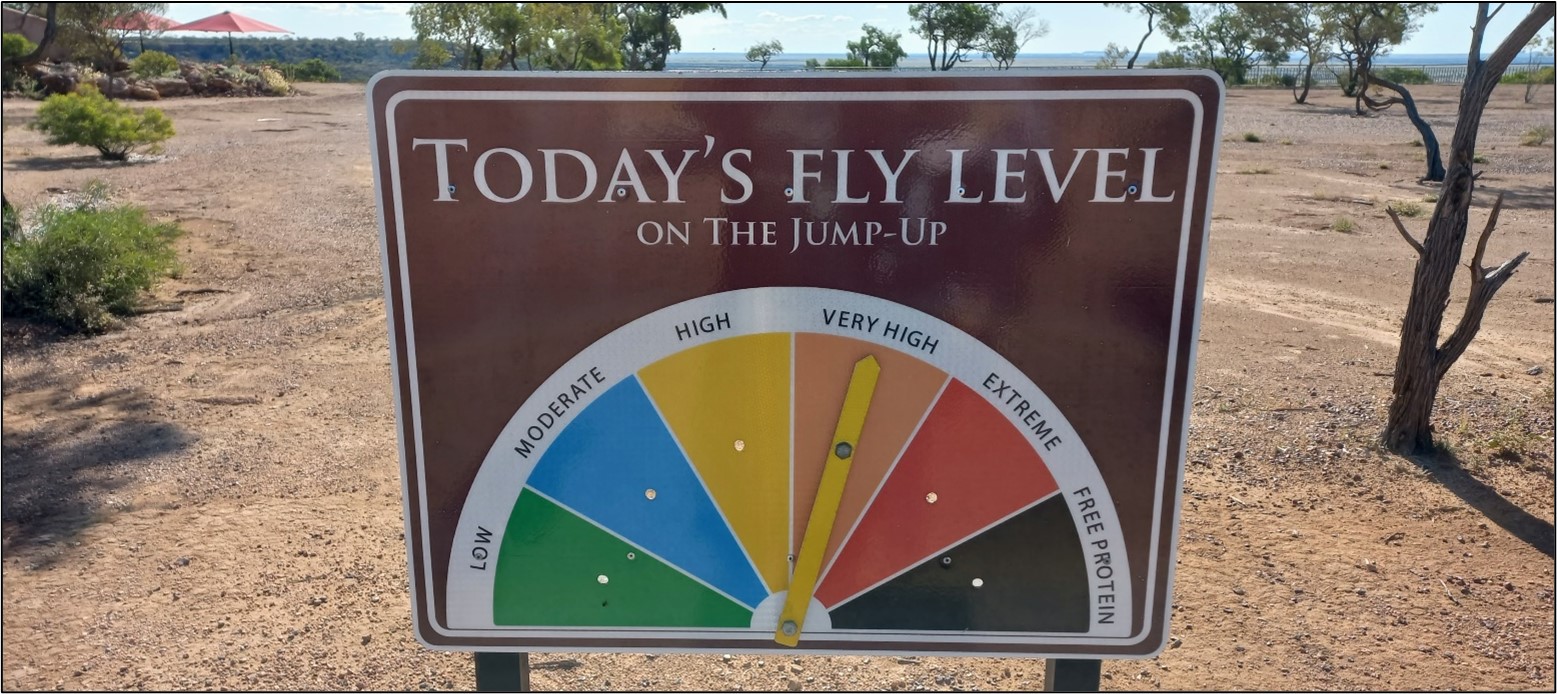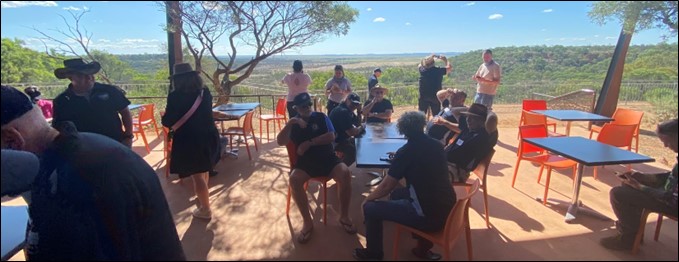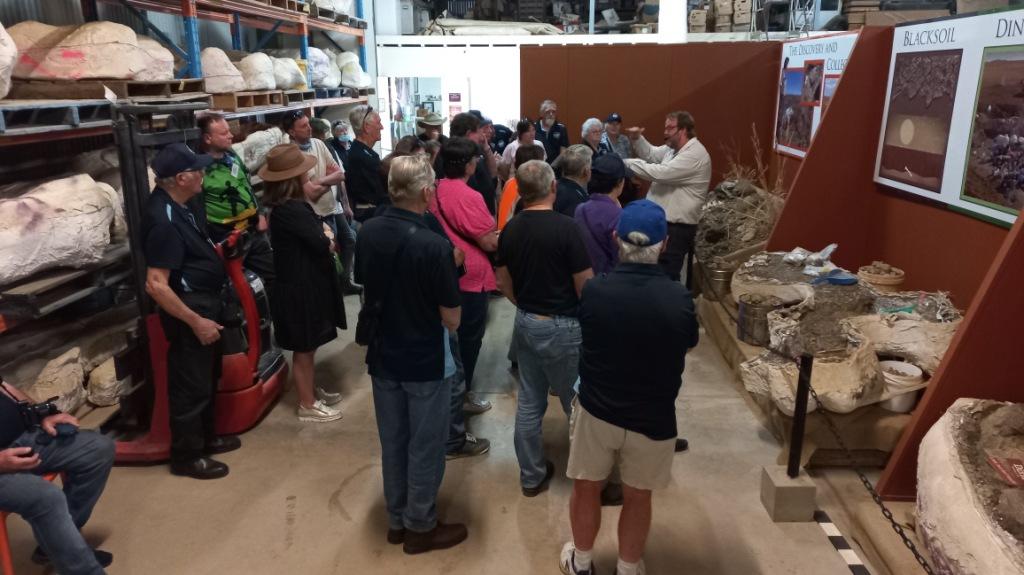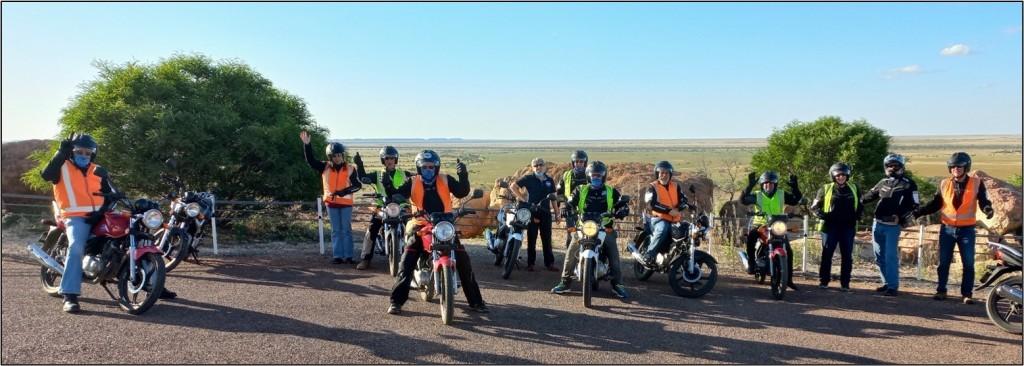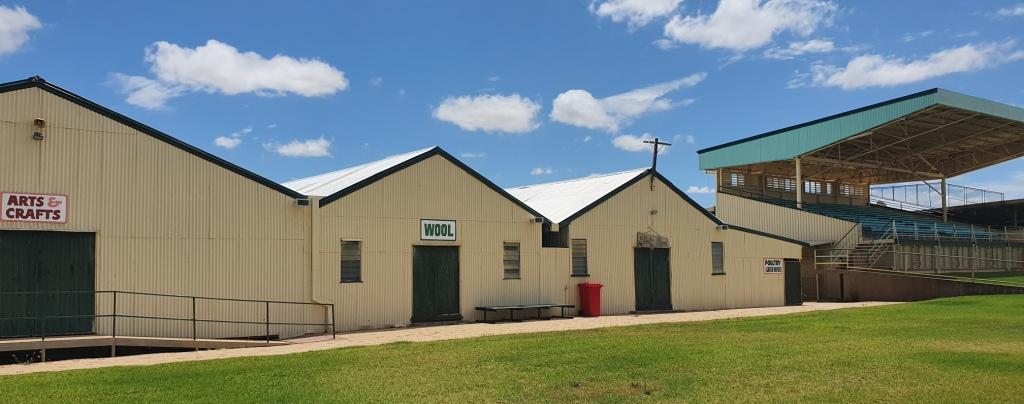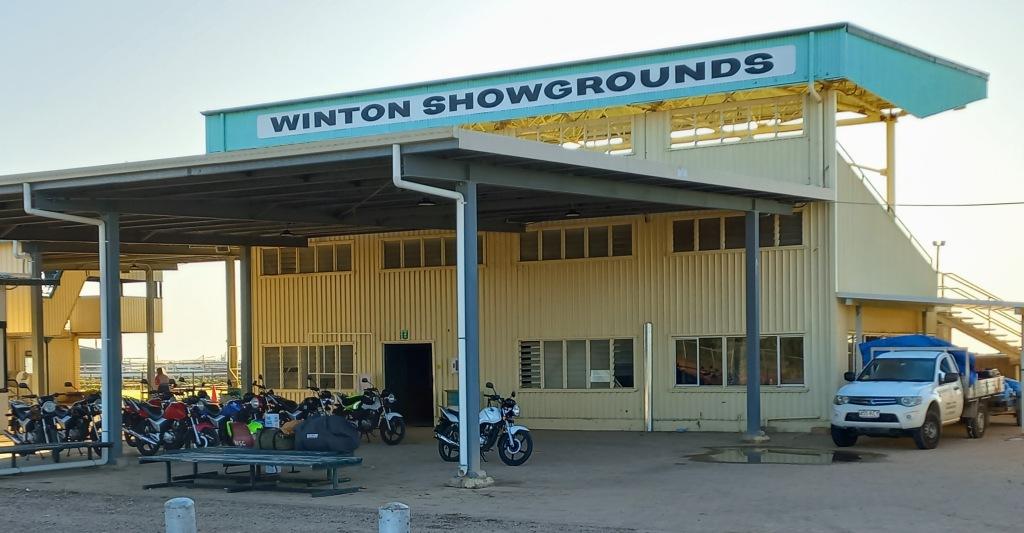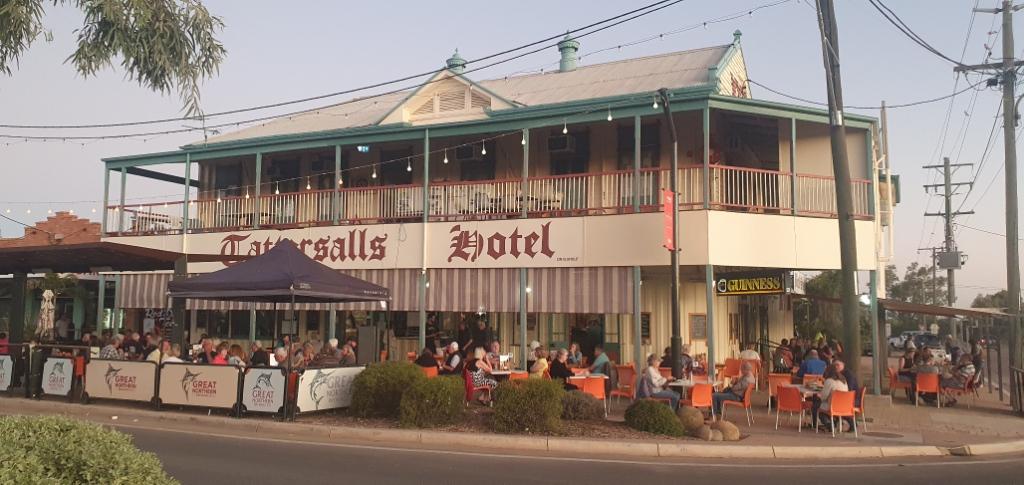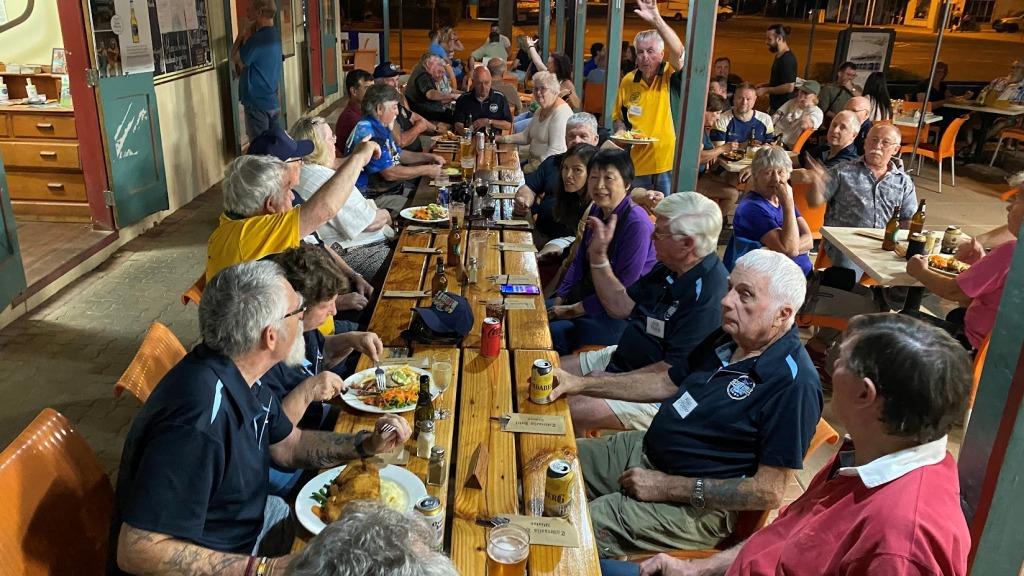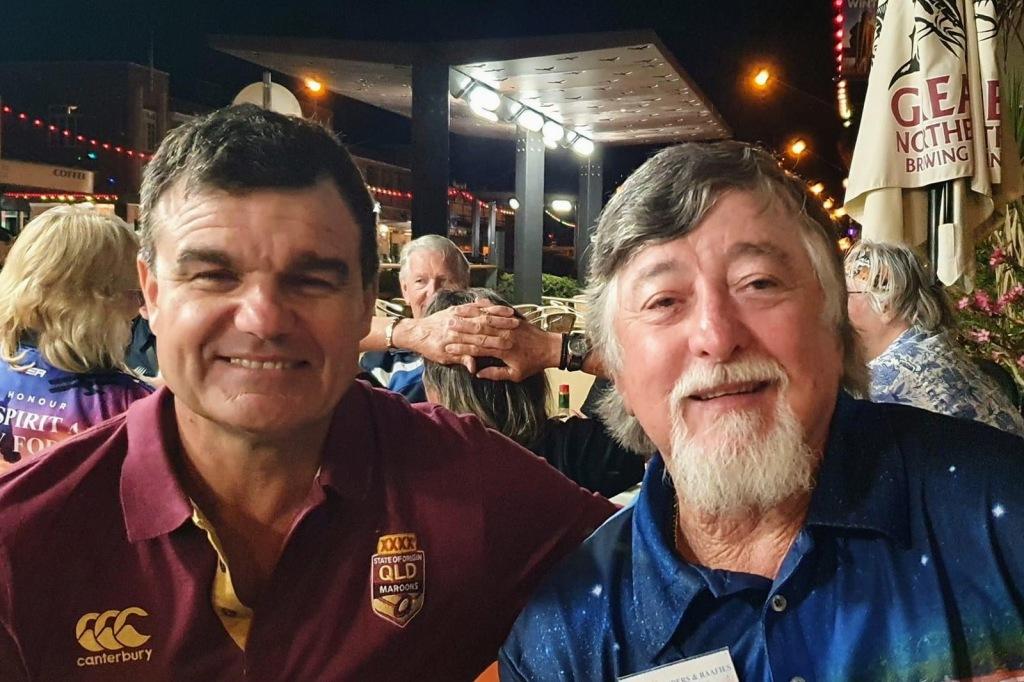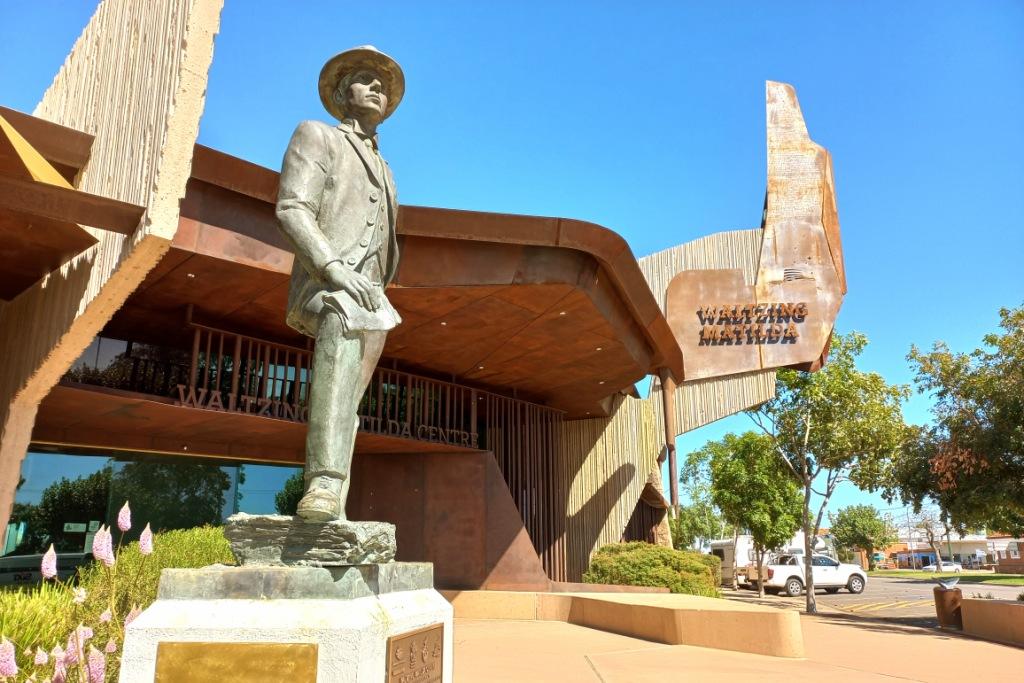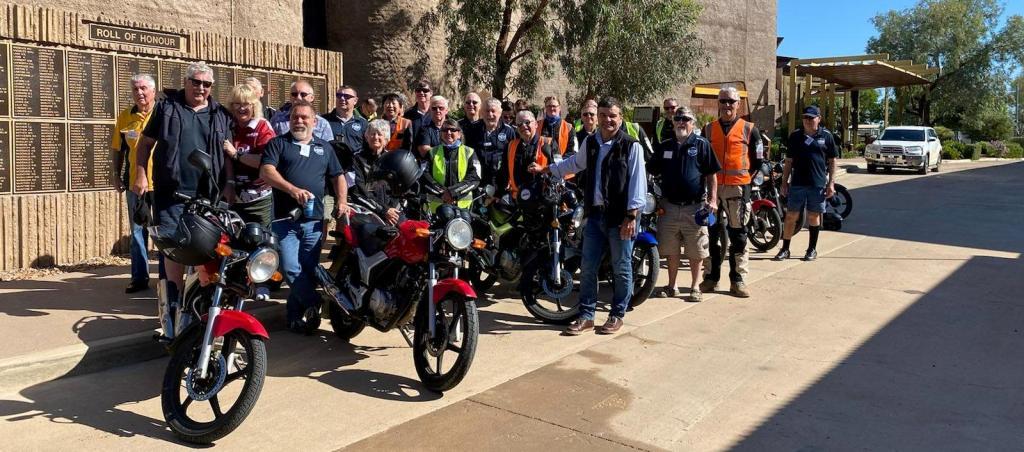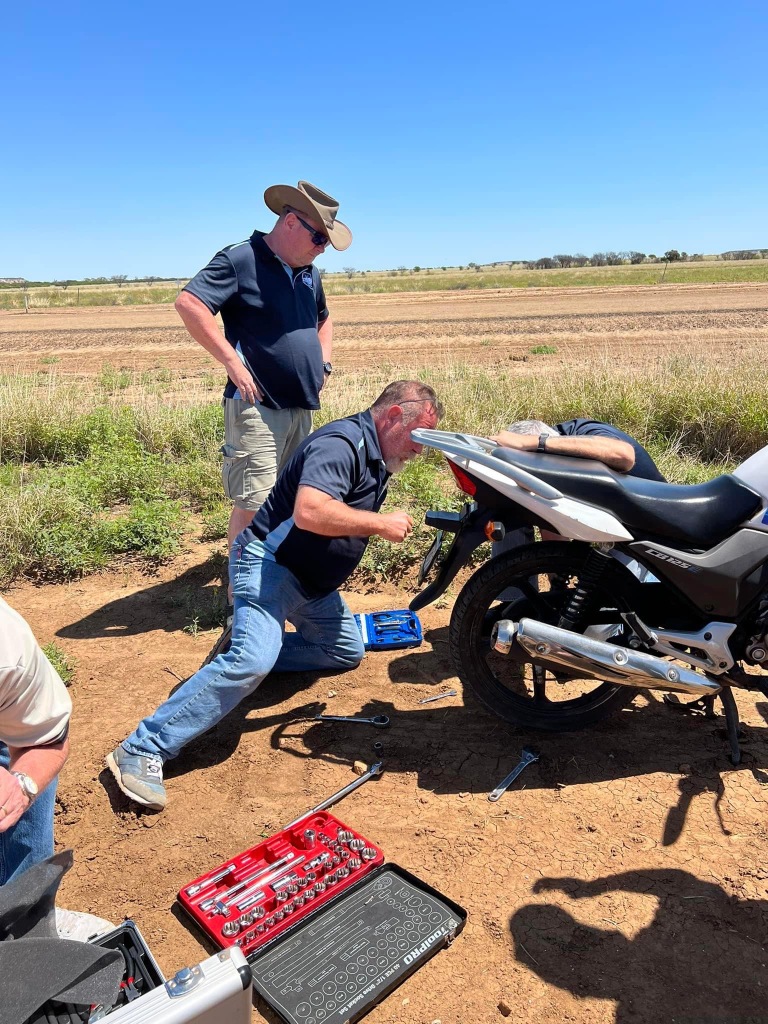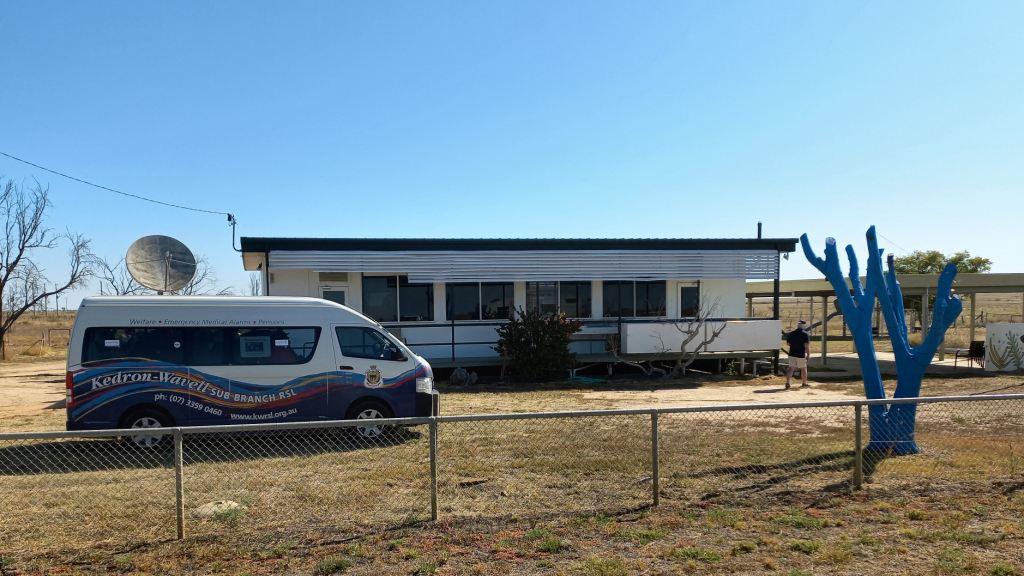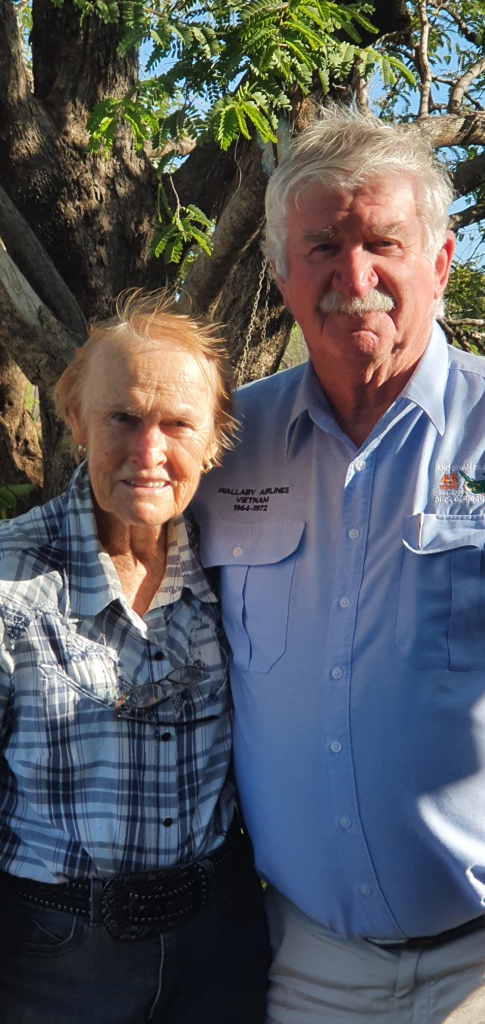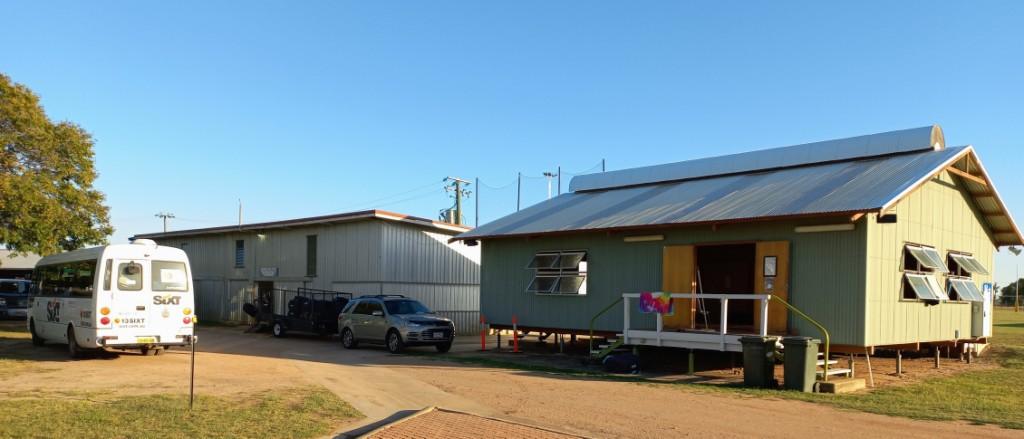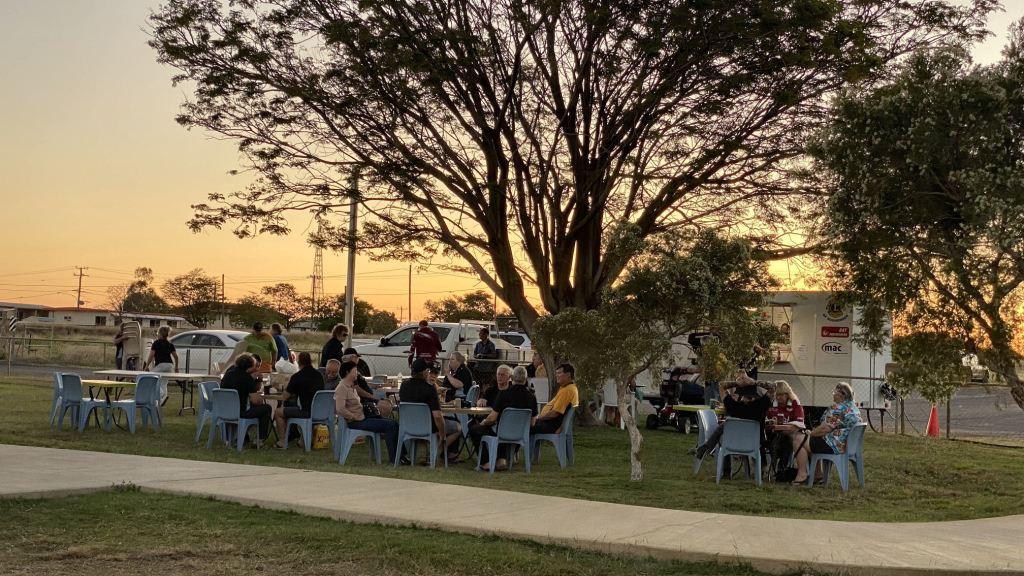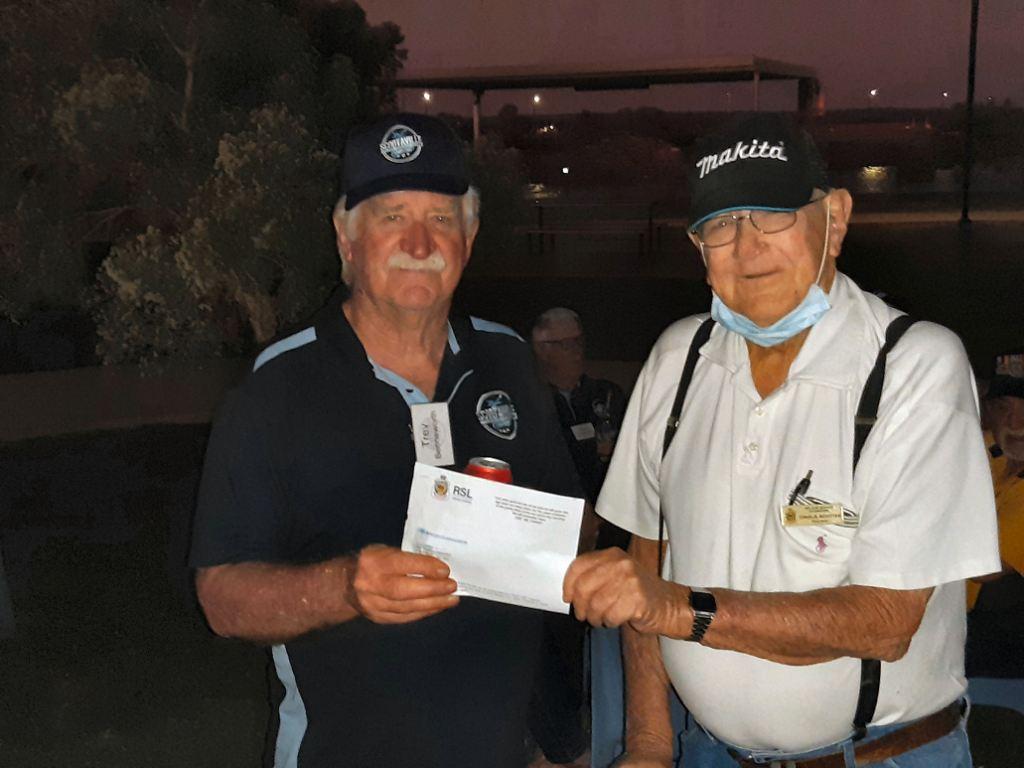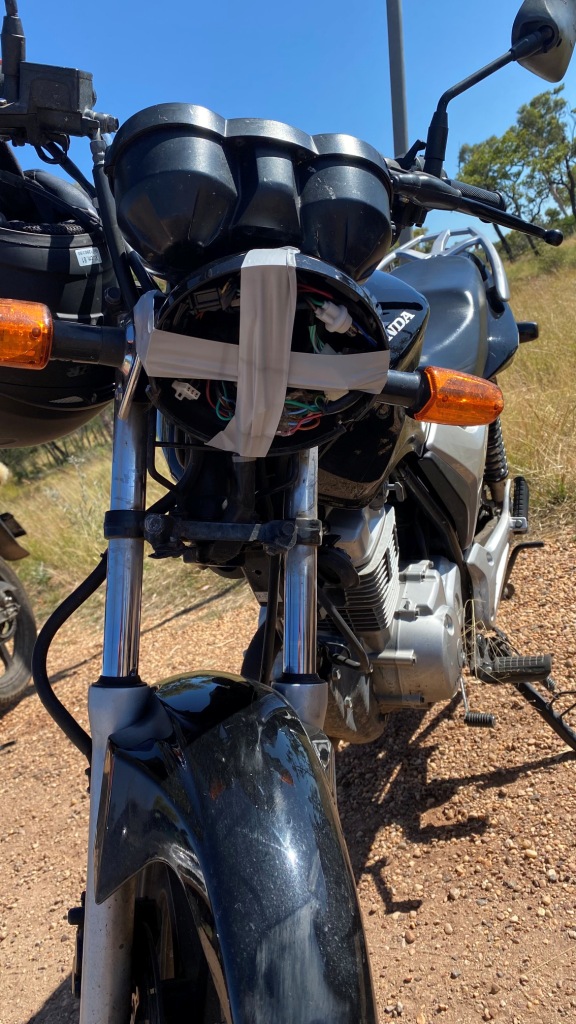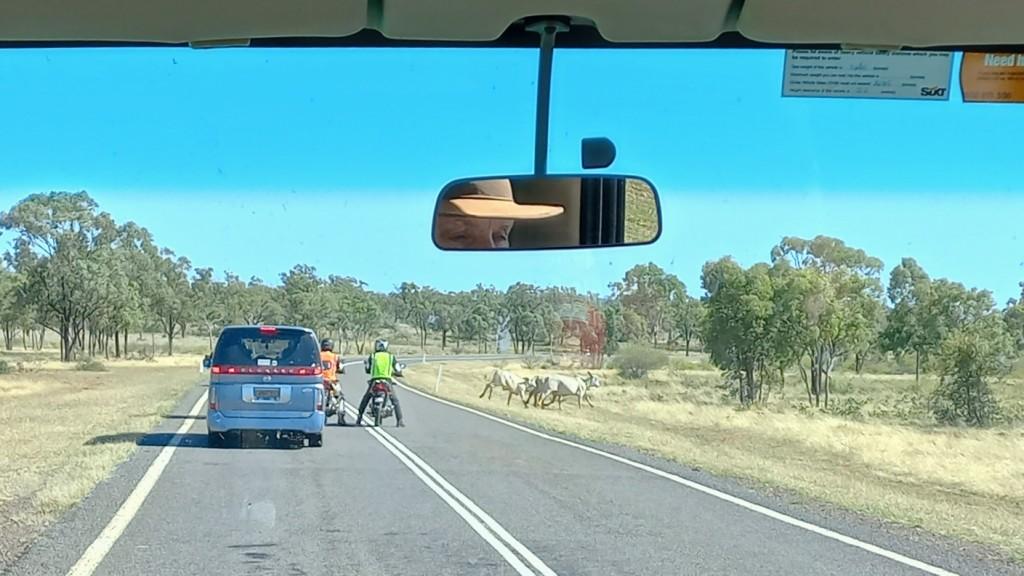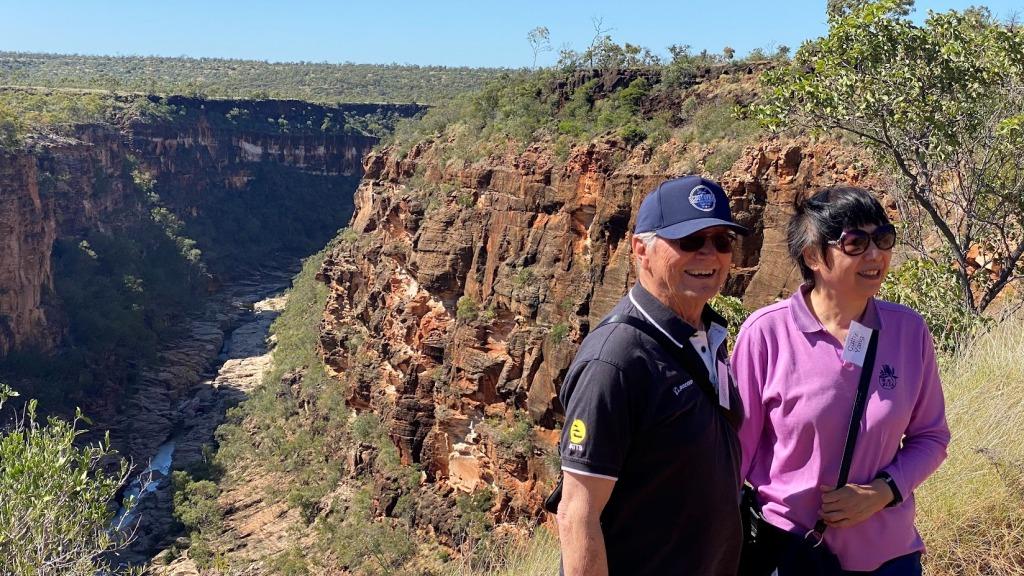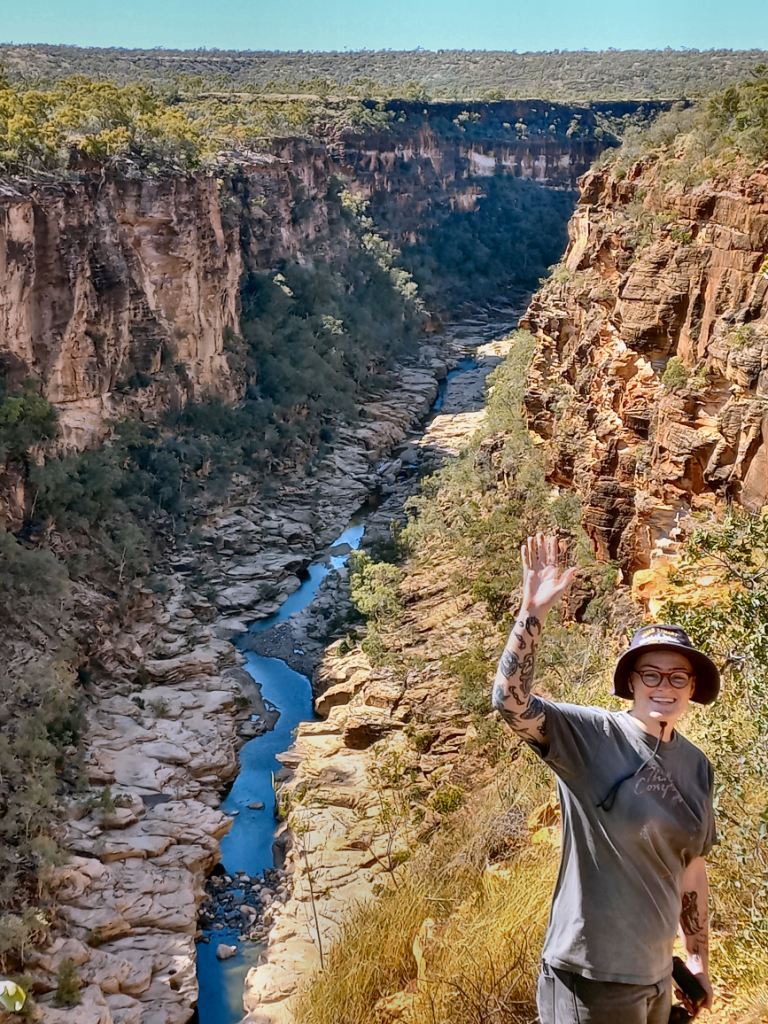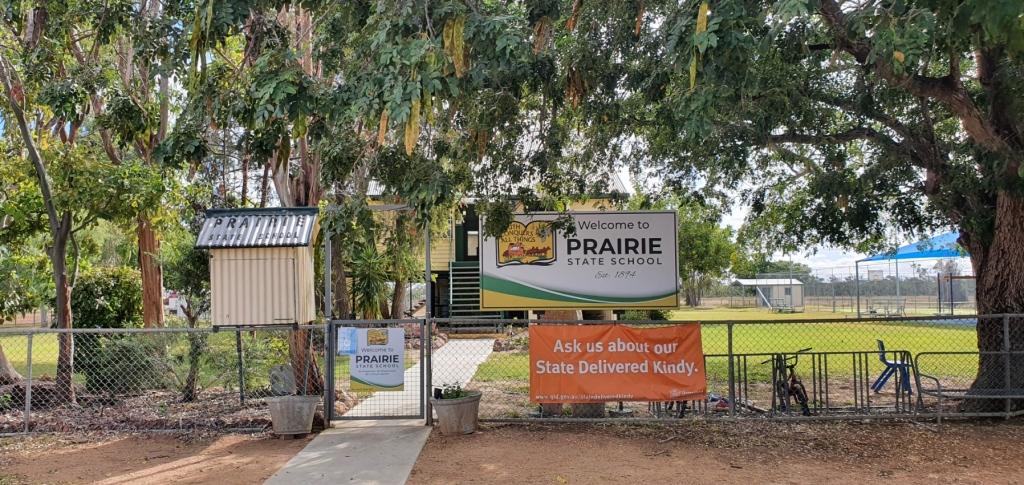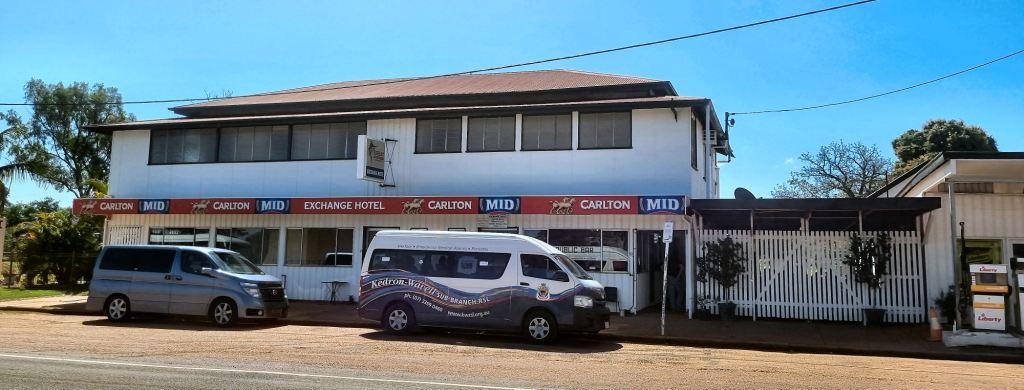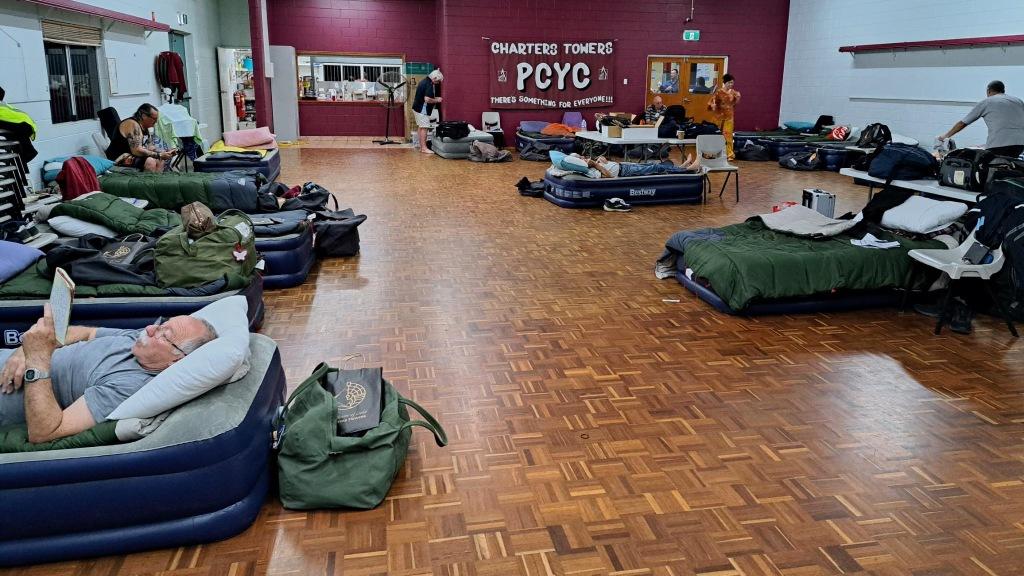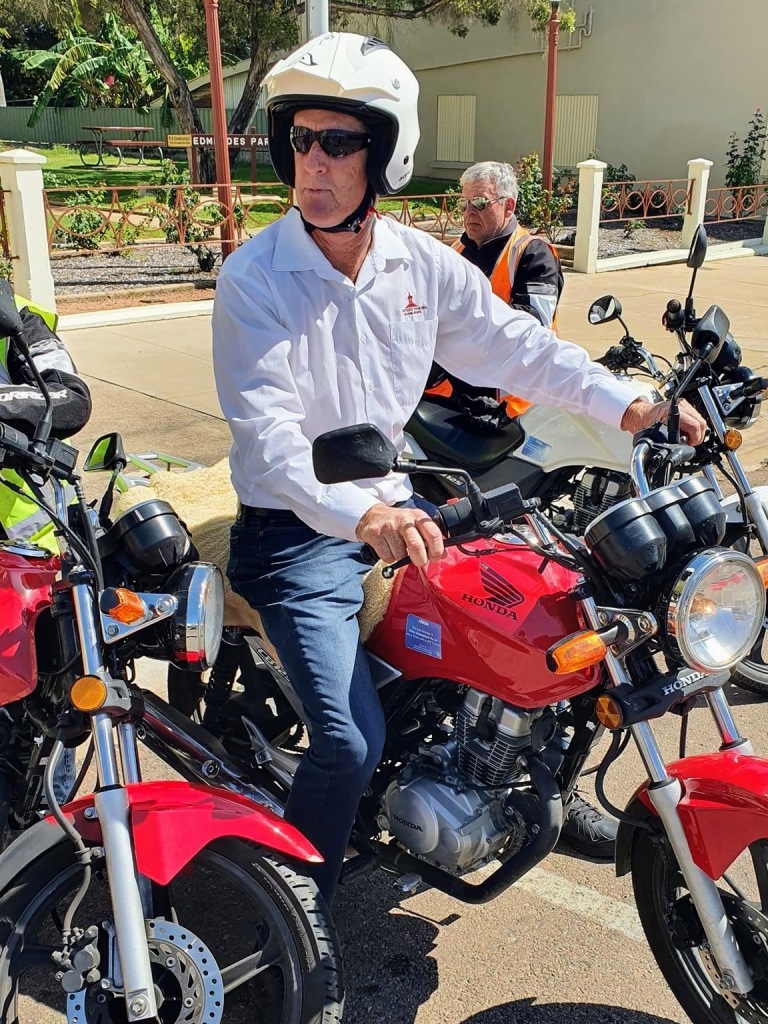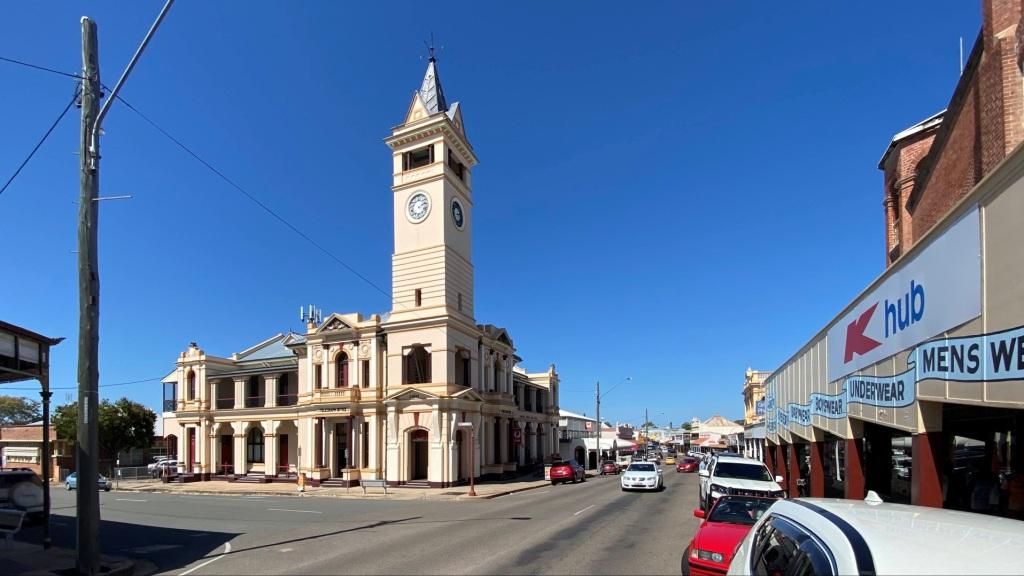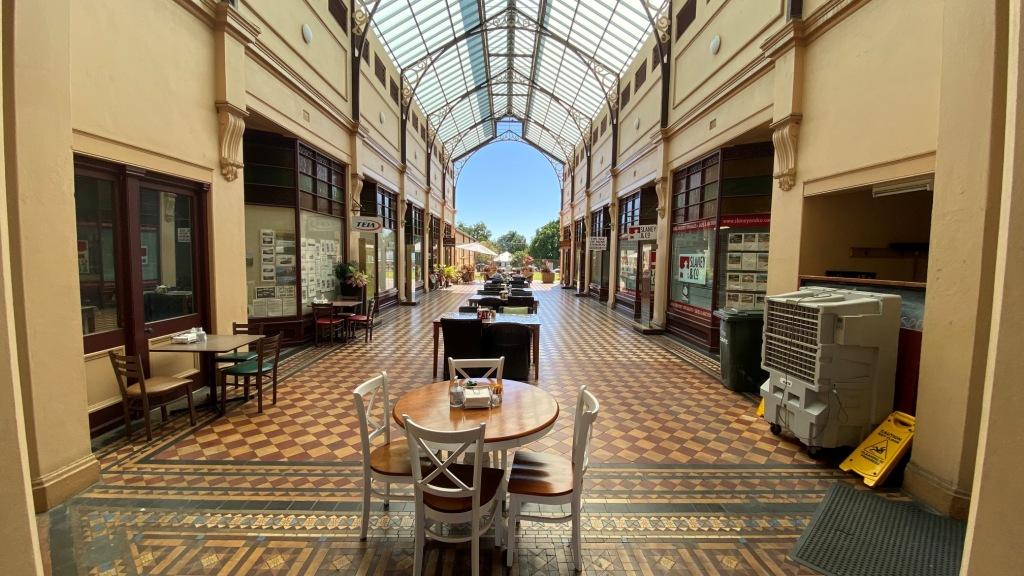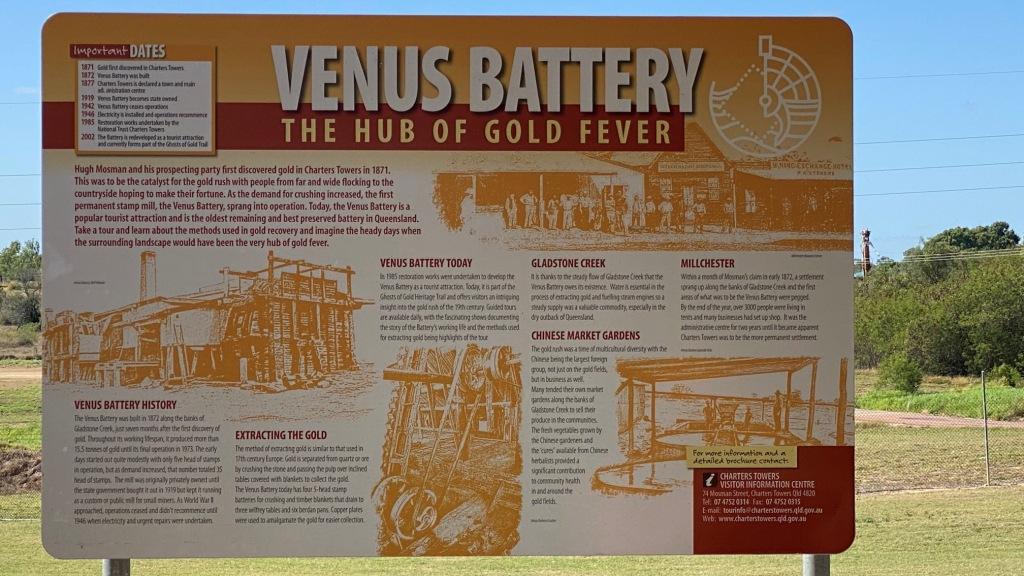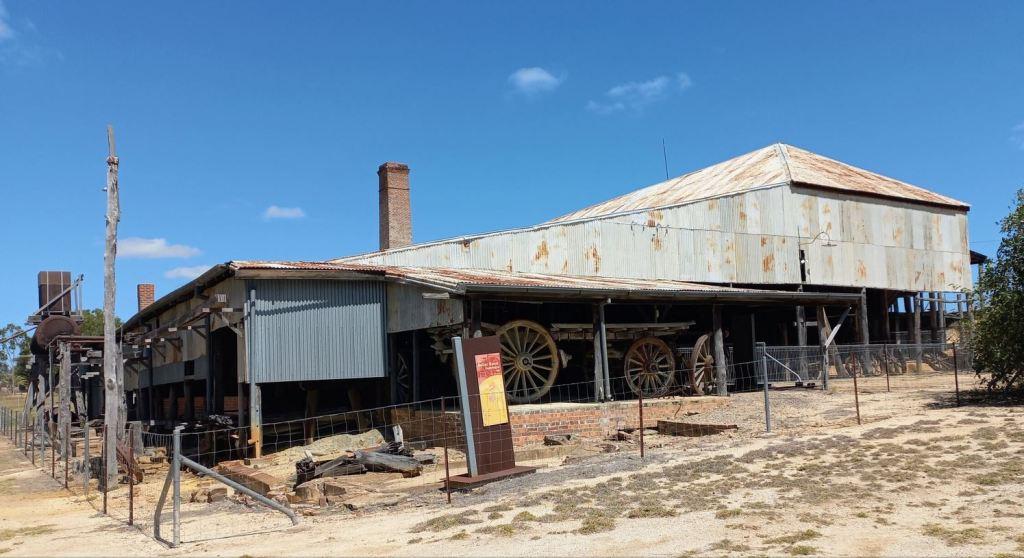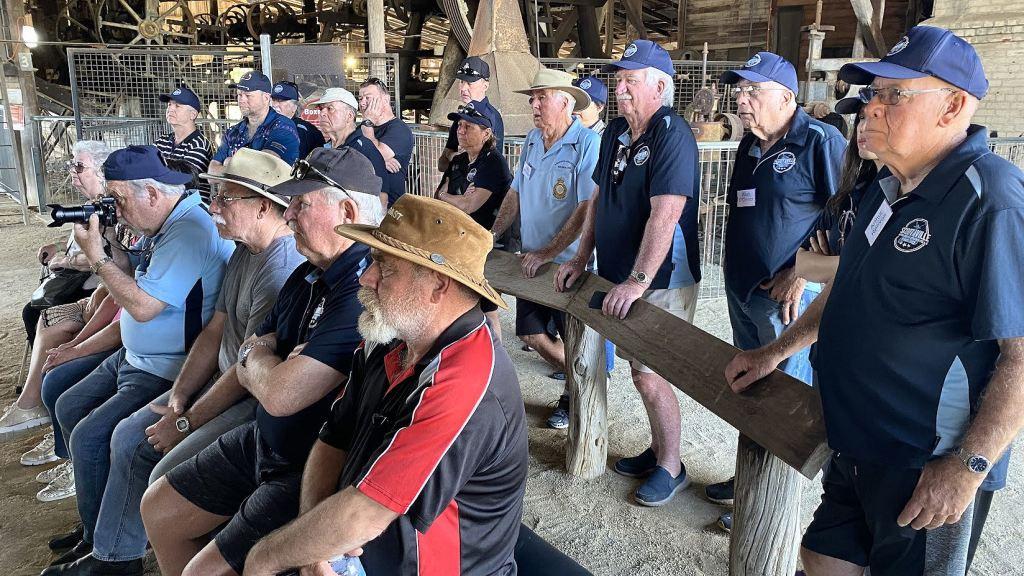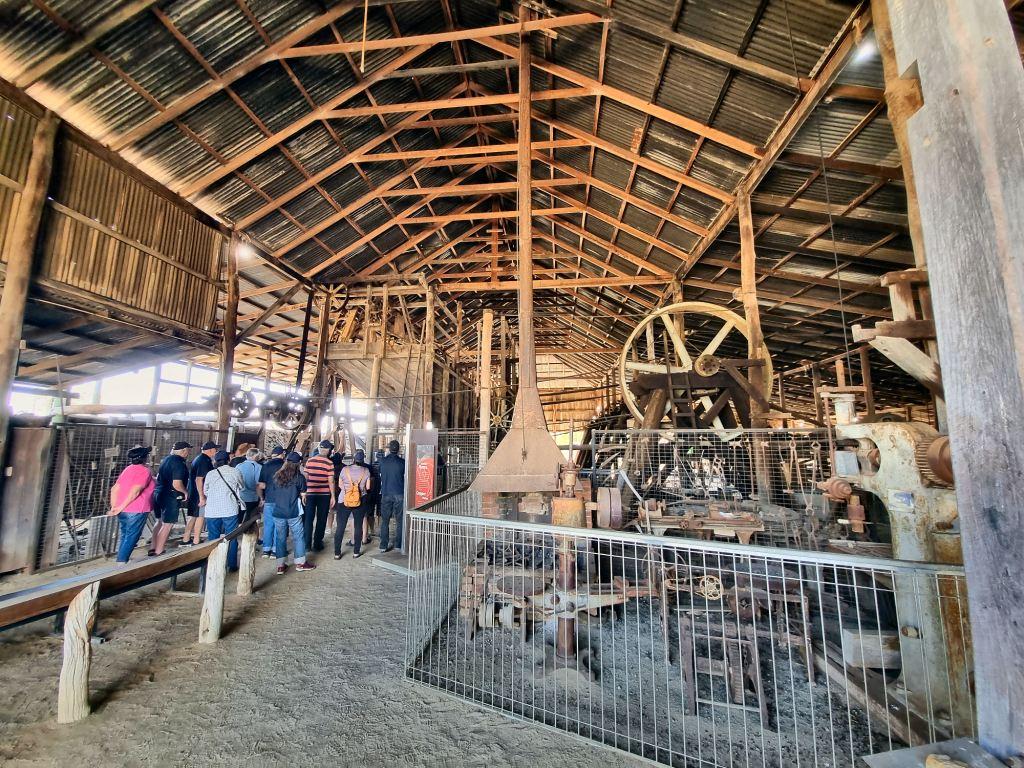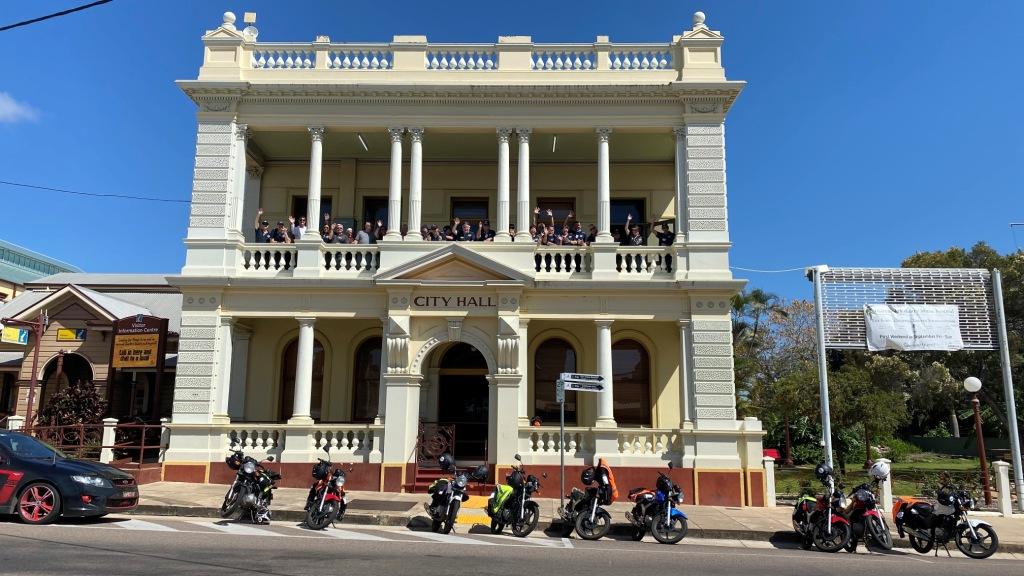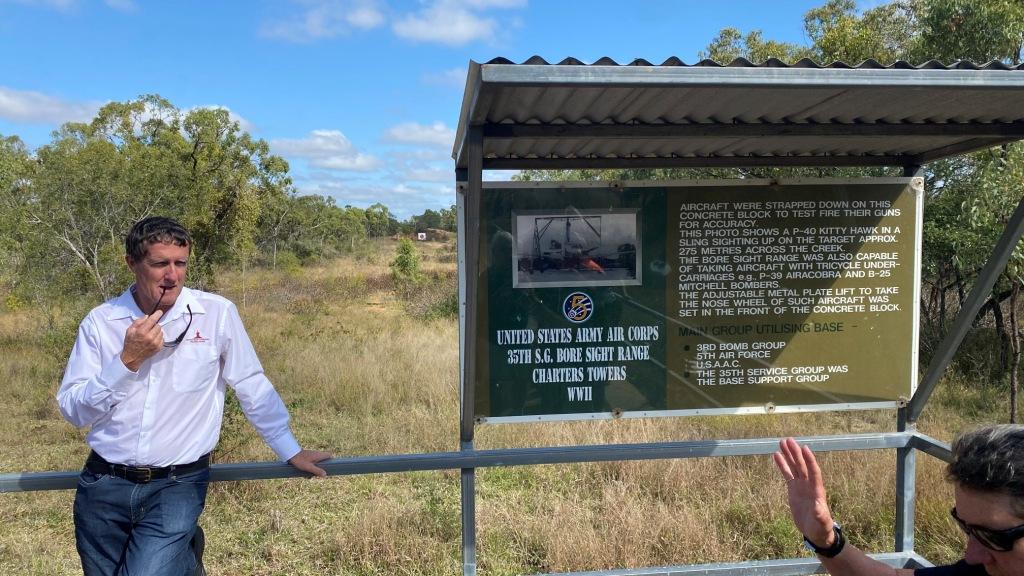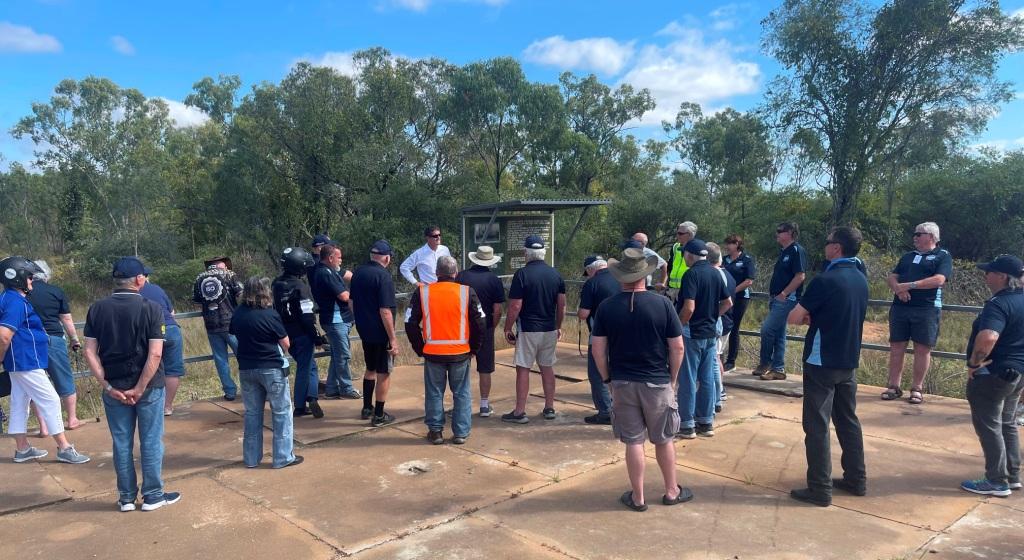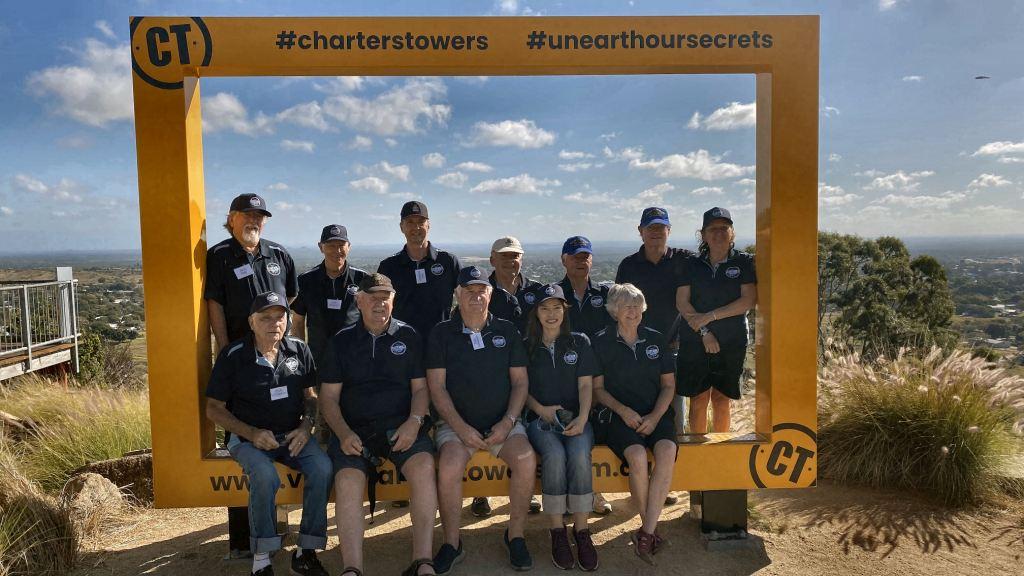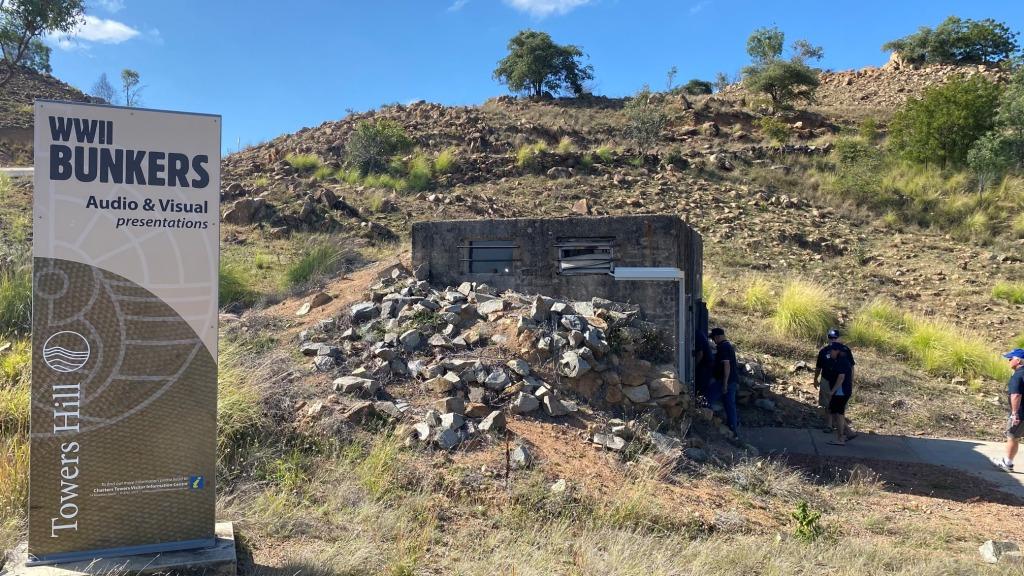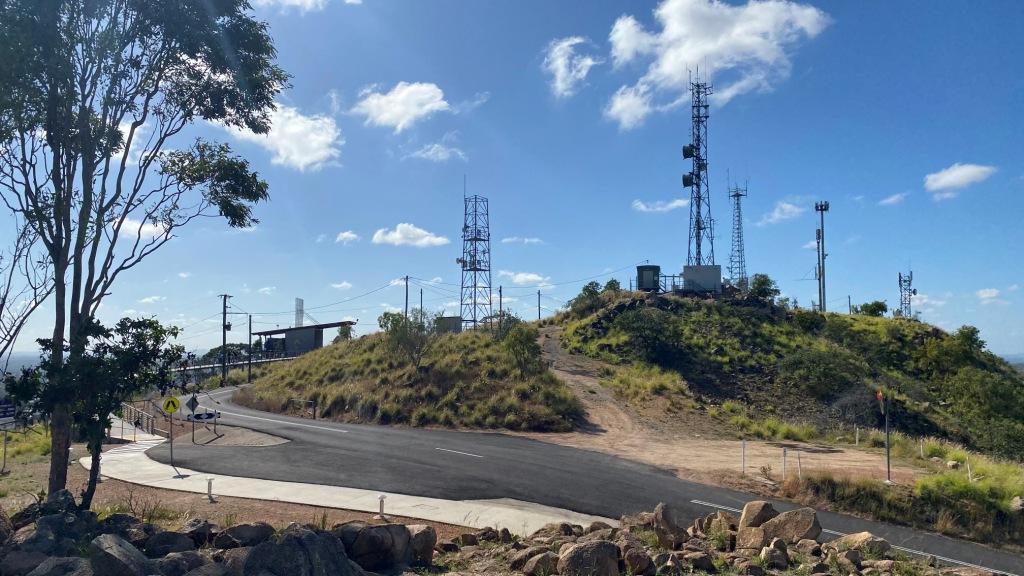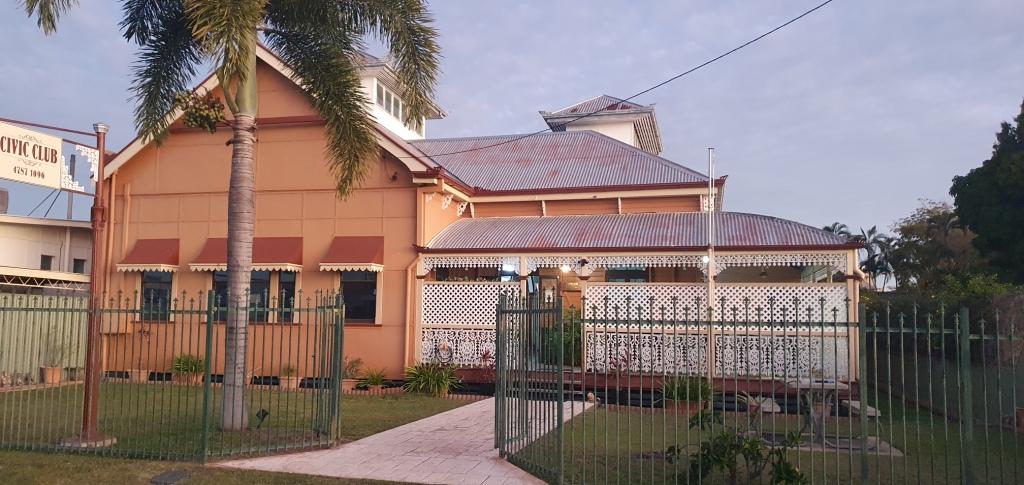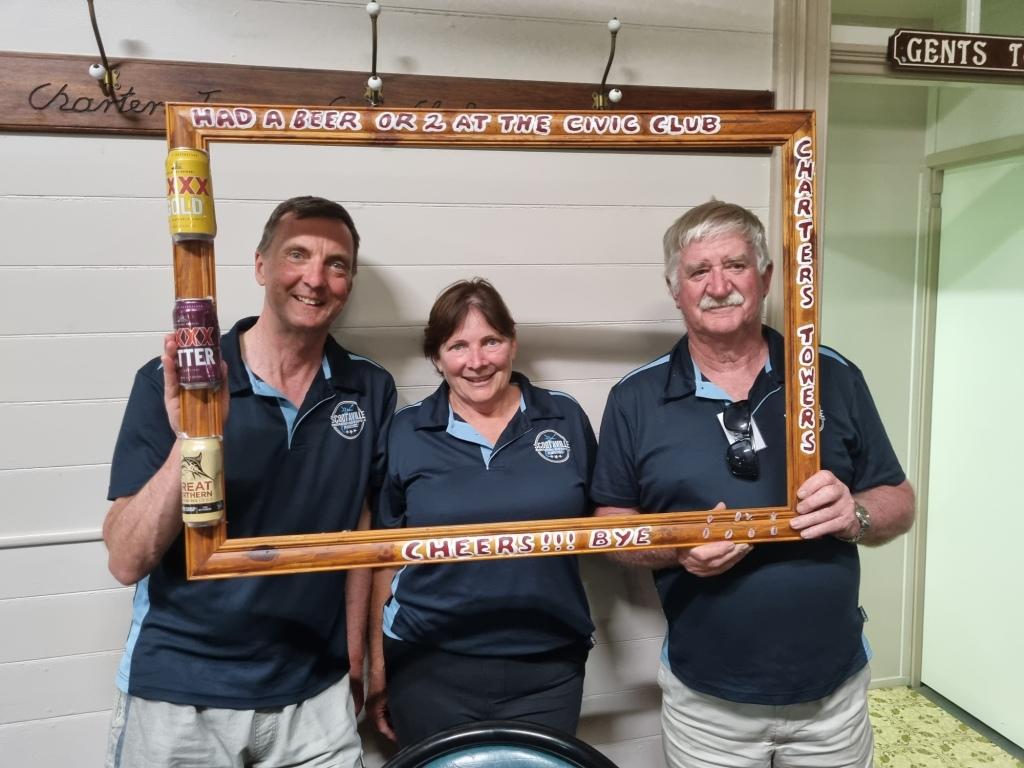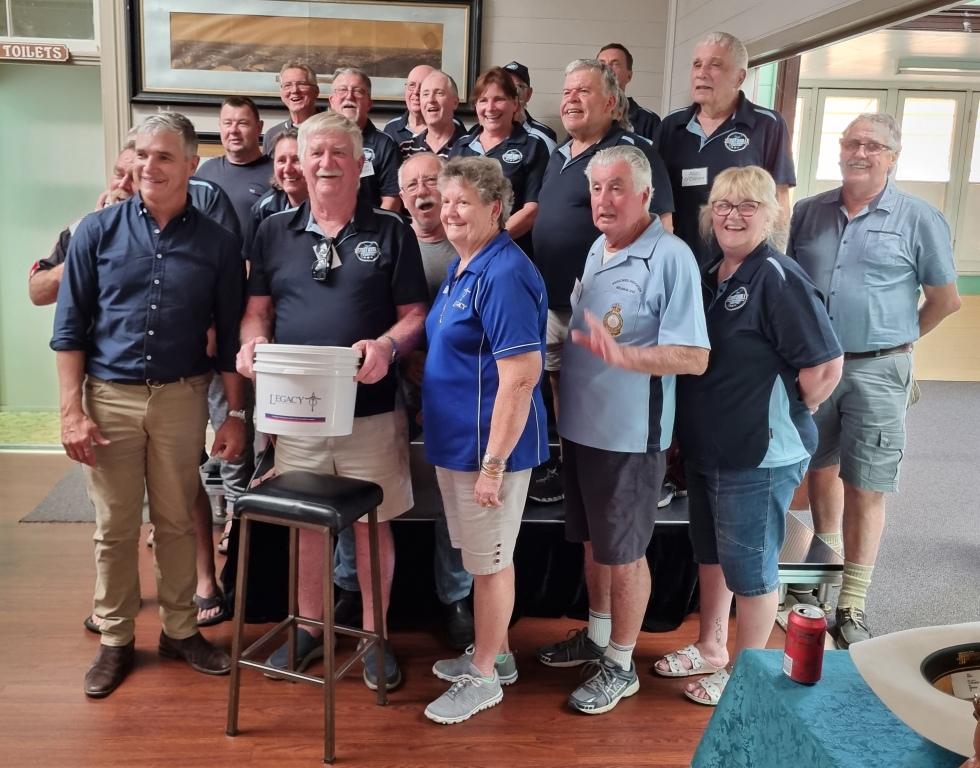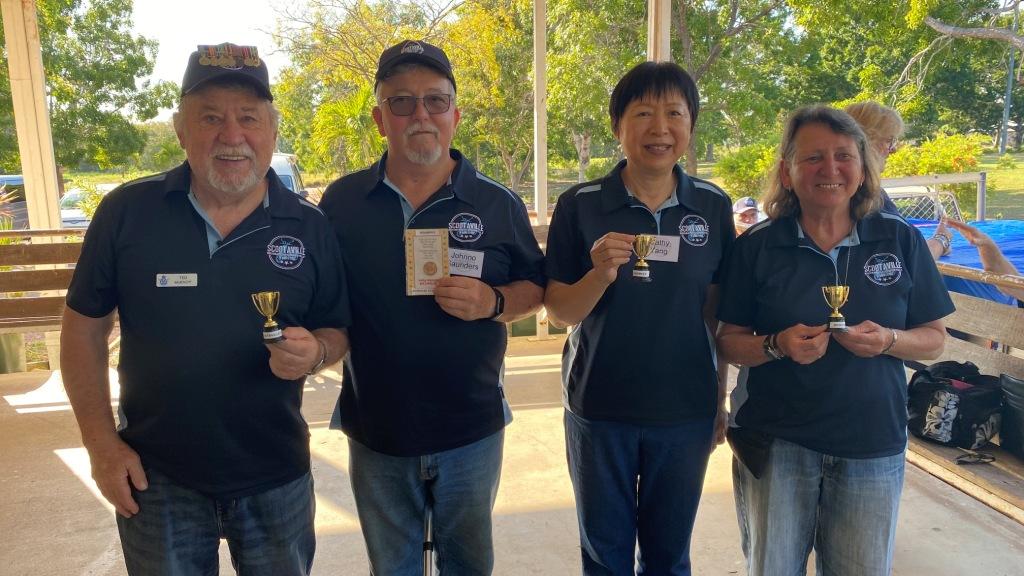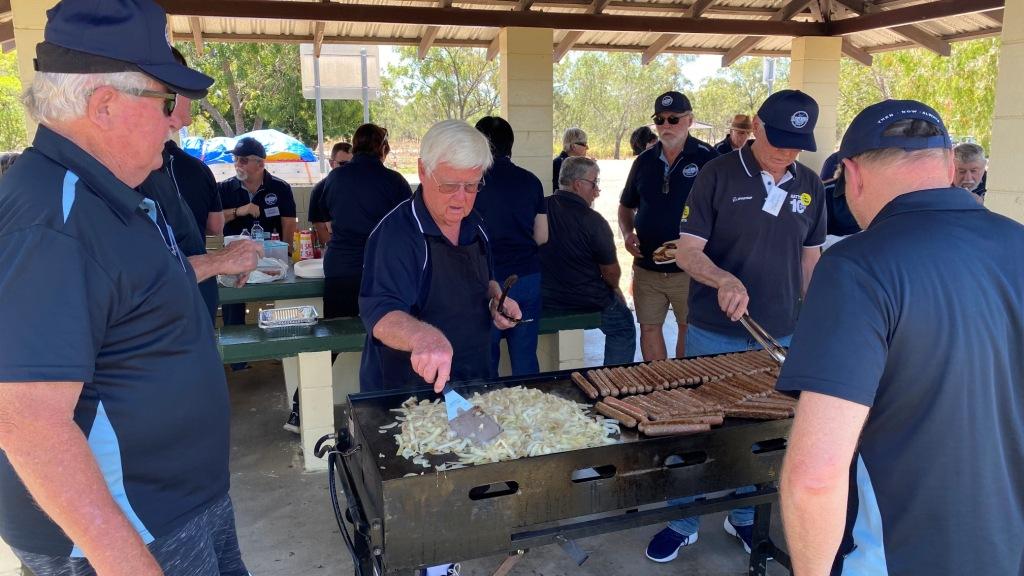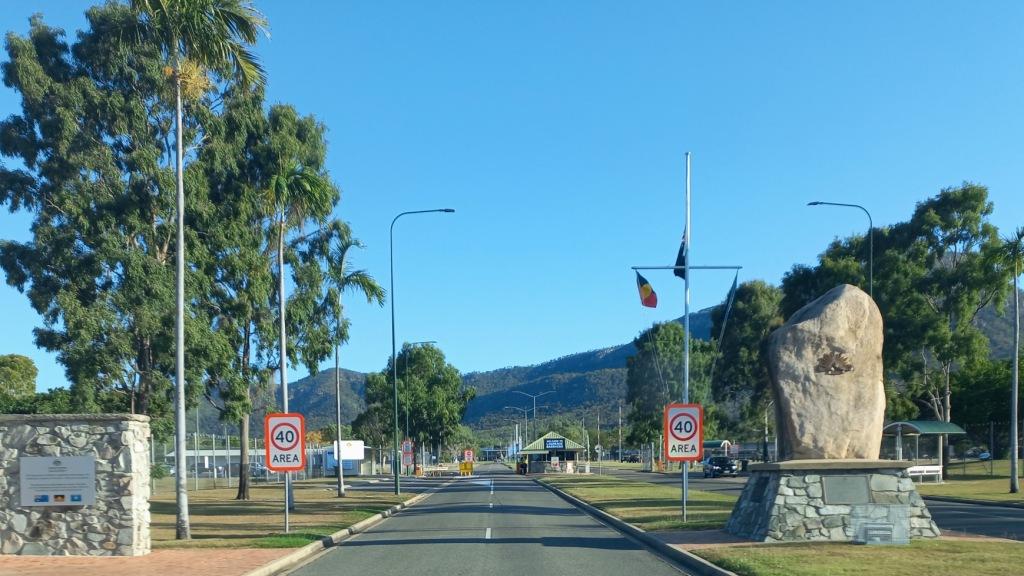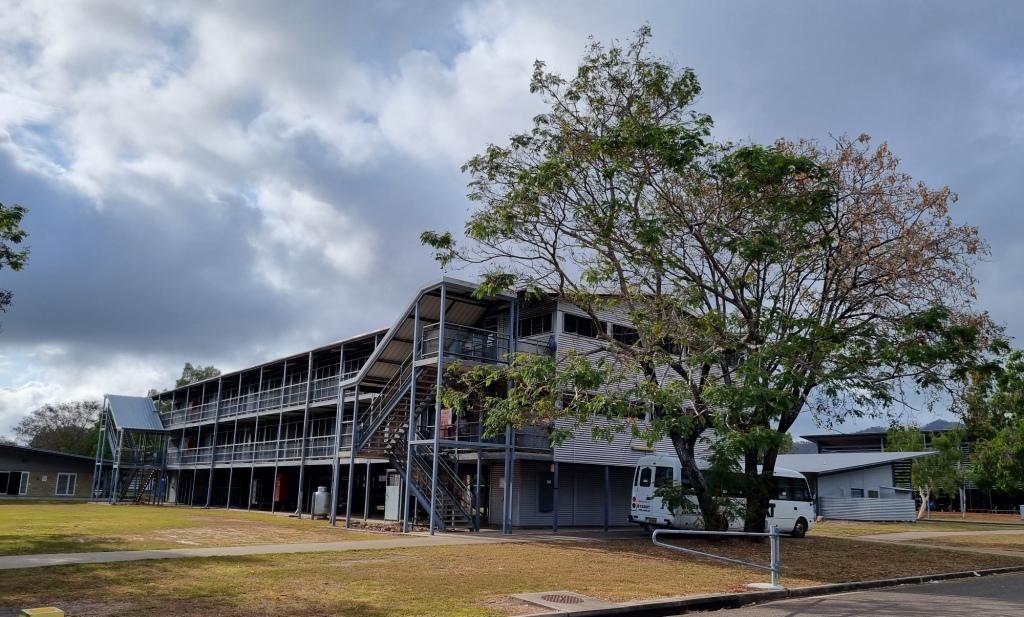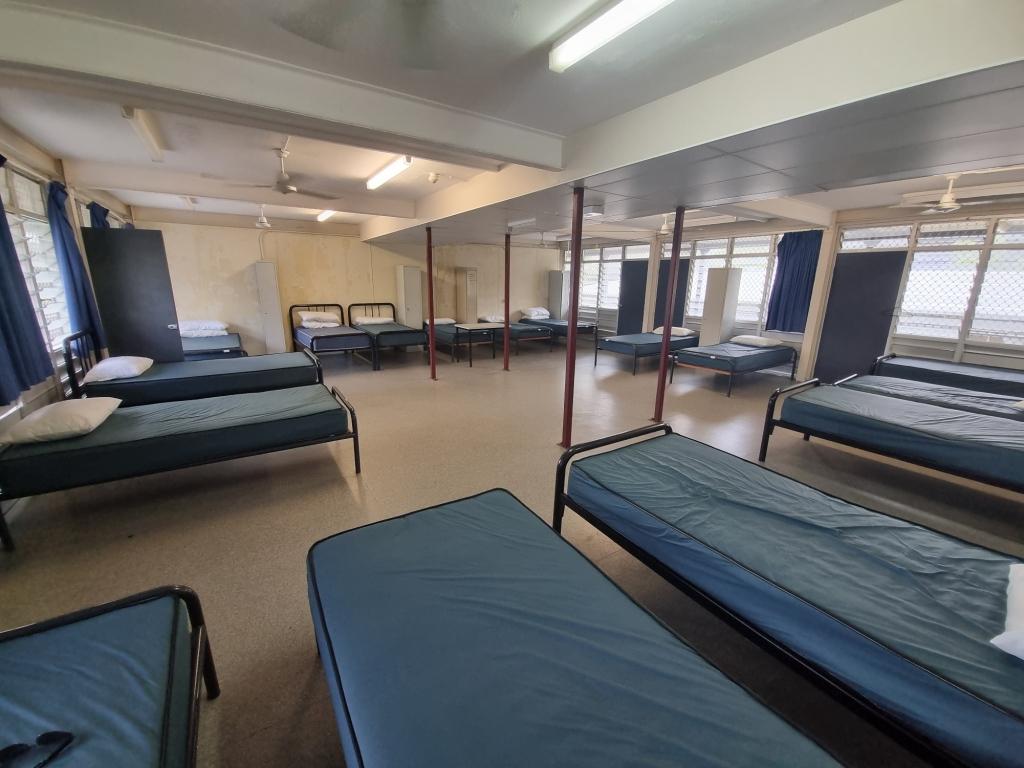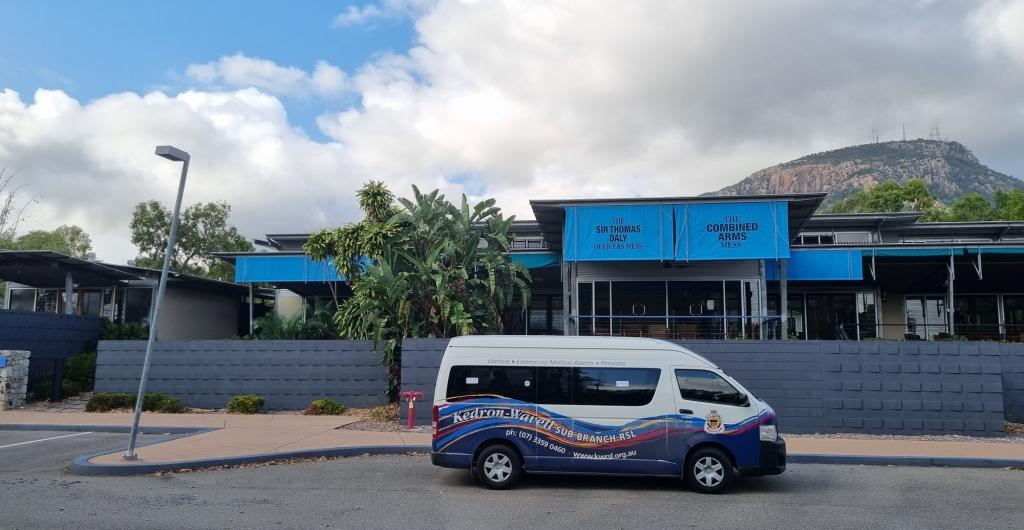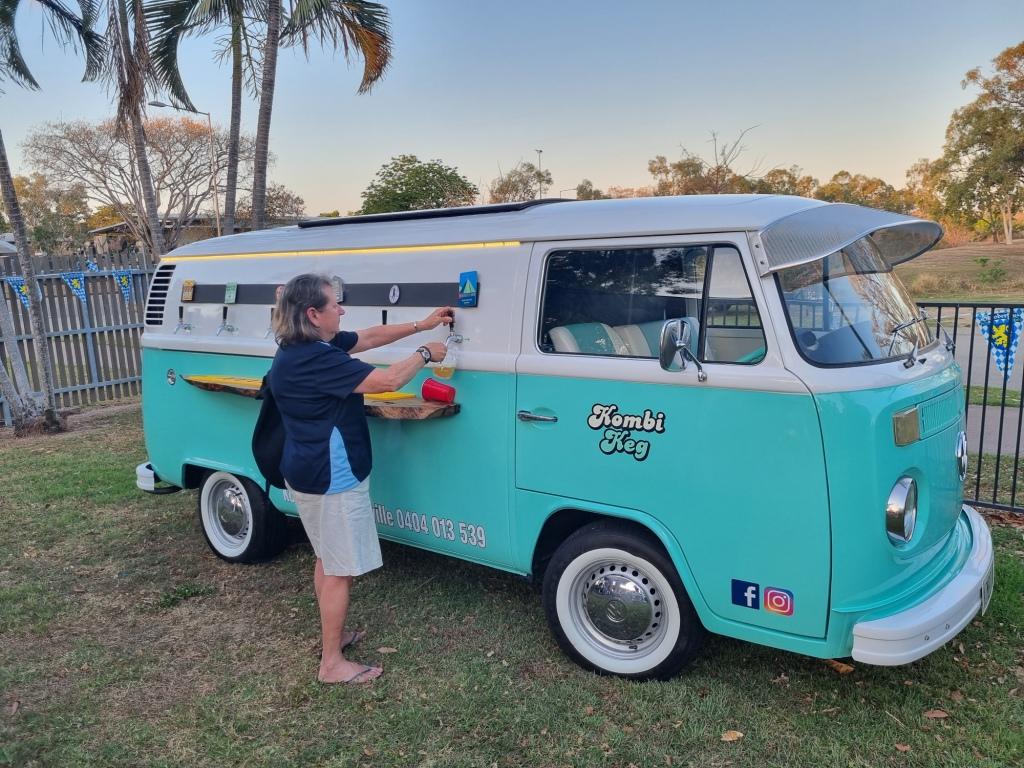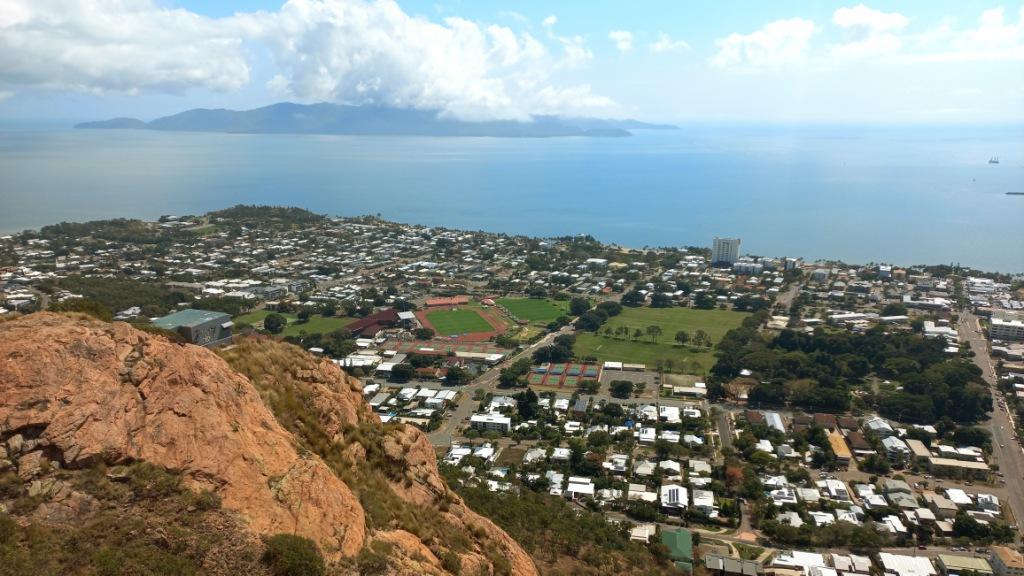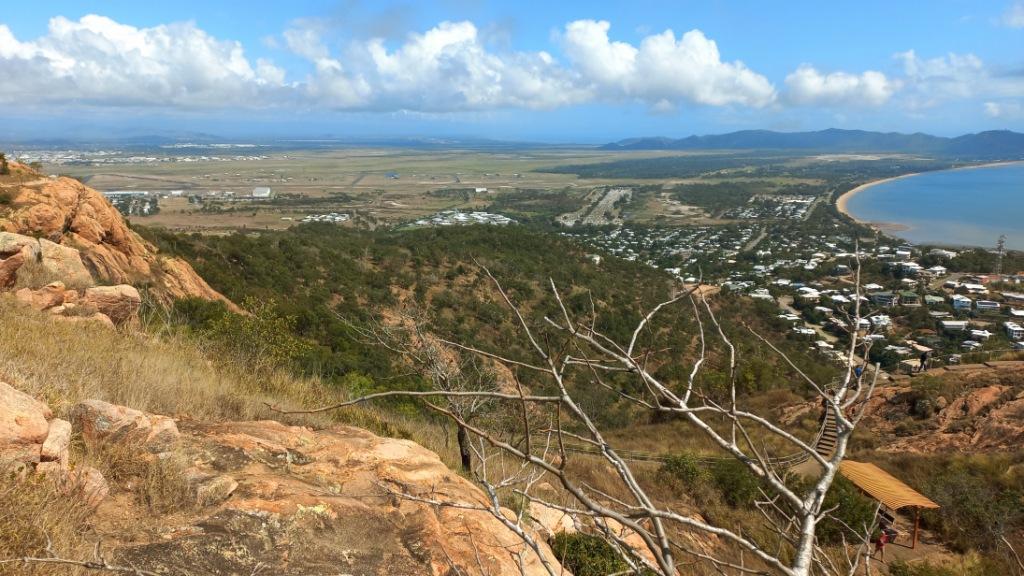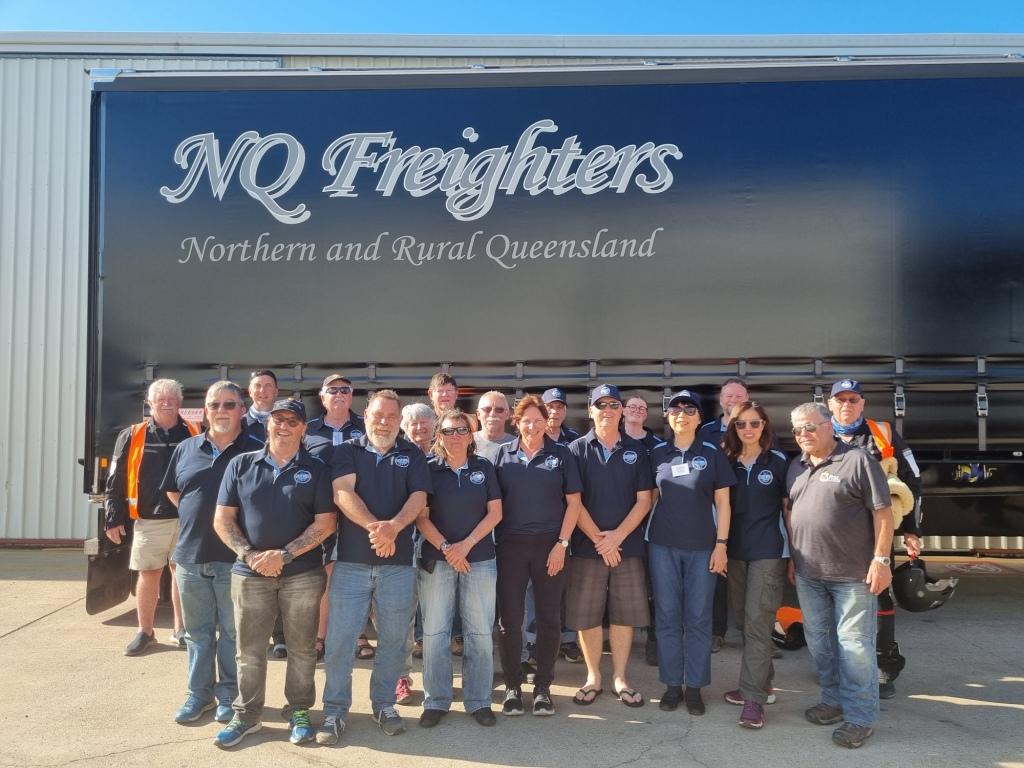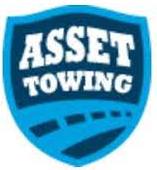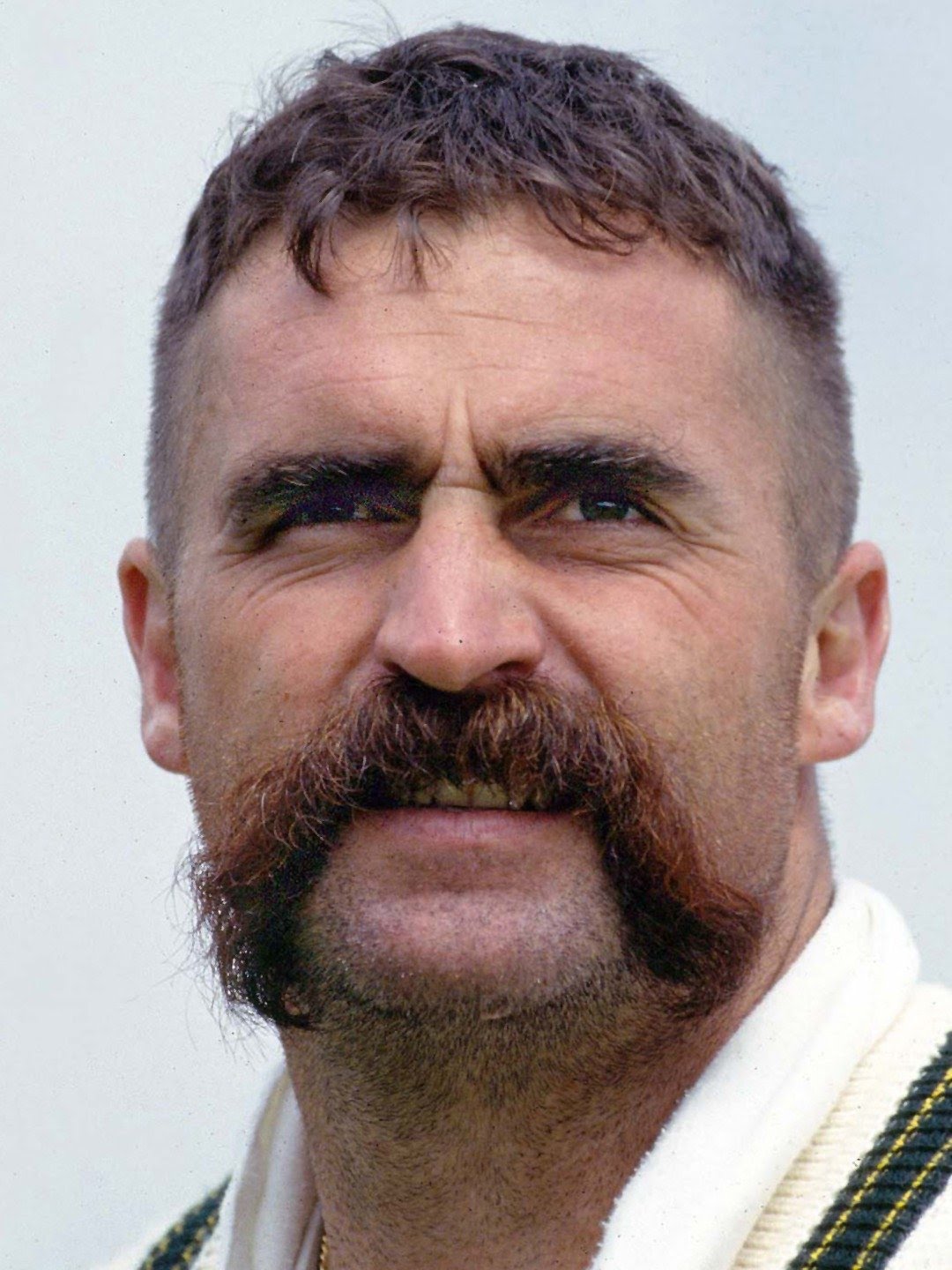|
|
||||||||||||||
|
||||||||||||||
|
Privacy Policy | Editorial Policy | Profit Policy | Join the Association | List of Members | Contact us | Index | Links |
||||||||||||||
|
Back Go to page: 1 2 3 4 5 6 7 8 9 10 11 12 13 14 15 16 17 18 19 20 Forward |
||||||||||||||
|
Some photos on this page have been crunched to allow the page to open quicker. You can get the HD version of each pic by clicking it. Scootaville 2022
Some photos on this page have been crunched to allow the page to open quicker. You can get the HD version of each pic by clicking it. |
||||||||||||||
|
After turning off the highway, we climbed the “Jump-Up”, what the locals call the hill on which the museum is situated, parked and walked towards the reception/café area, with our mouths closed. |
||||||||||||||
|
|
||||||||||||||
|
We had decided we would like to do one of the Museum’s tours, so we sat and enjoyed the view while waiting our turn.
|
||||||||||||||
|
As we were a bit short on time we only did the 30 minute fossil prep lab tour – and we feel this is a tour for the dedicated fossil connoisseur only. Personally, we didn’t get a lot from it, except to say we’ve done it. |
||||||||||||||
|
After the tour, we headed back down the “Jump-Up”, stopping for a photo then it was onto Winton, where once again the Winton Council had generously granted us access to a pavilion on their showground.
|
||||||||||||||
|
The Winton showground pavilions.
|
||||||||||||||
|
We were lucky at Winton as the showground had a large covered area where we could park and give the bikes a service.
That evening we decided to dine at the famous Tattersalls Hotel. Tatts, as it has been known since it was built in 1885, was originally a single-storey building, a second storey was put on some time between 1910 and 1914, but nobody is sure exactly when. Briefly, its name was changed to ‘The Combo’, but most people have always called it The Tatts. The pub has had many owners over its lifespan, each leaving their mark without detracting from The Tatts’ integrity.
|
||||||||||||||
|
Tattersalls Hotel, Winton.
We loaded up the two buses and headed for the Tatts for one of their fabulous gigantic meals. |
||||||||||||||
|
Winton Mayor, Gavin Basket, gave us some of his valuable time and went out of his way to join us. He also offered to show us around his great little town.
|
||||||||||||||
|
Winton Mayor Gavin Baskett with the unofficial Mayor of Charters Towers, Ken Hey.
|
||||||||||||||
|
Next morning we met Gavin in the main street and as promised, he hopped on one of our bikes and led us on a noisy tour of his town – see below. |
||||||||||||||
|
|
||||||||||||||
|
After stirring up the locals, Gavin suggested we do a tour of the town’s magnificent Waltzing Matilda centre, the first museum in the world dedicated to a song, which of course we did.
|
||||||||||||||
|
While in the vicinity of the Museum, we had a look at the public Roll of Honour which commemorates those who served in the Boer War, WW1, WW2, Korean War and the Vietnam War.
Another stop was the North Gregory Hotel, known as the ‘Queen’, she’s been a Winton resident since 1879. This is where, in 1895, Banjo Patterson unknowingly premiered Australia’s now unofficial national anthem and was where secret meetings forming Qantas were held.
|
||||||||||||||
|
The local saying about Qantas is that it was conceived in Cloncurry, born in Winton and grew up in Longreach.
|
||||||||||||||
|
The Winton chapter of Qantas begins when the birth of Qantas was announced in Winton on the 16th November, 1920 with the initial registration of the company – Queensland and Northern Territory Aerial Services Ltd. Subsequently, the first Board Meeting was held at the Winton Club on the 10th February, 1921. Later in 1921, the Winton Shire Council became the first local authority in Australia to support Commercial Aviation after subsidising half the cost of establishing a landing field in Winton, to the sum of £20 ($40).
The main headquarters of QANTAS was eventually shifted to Longreach, as a more logical location.
|
||||||||||||||
|
What was the best thing before sliced bread?
|
||||||||||||||
|
Winton was where we experienced two (minor) mechanical problems. One of the bikes had a slow leak in the rear wheel and we decided to get it fixed before leaving town. We called into Tuff Tyres in Winton to have it fixed and were delightfully surprised when the owner decided not to charge us – he too knew someone which Legacy had helped and this was his way of saying thank you. The other, as we headed out, one of the bikes developed an engine miss. We found the spring that holds the side stand in its retracted position had gone soft with age and as the stand vibrated up and down it operated the engine cut-out micro. A bit of duck tape and we were on our way again.
Ian Aves (right) diagnosing the little Honda which had an occasional miss – with Kiwi Campbell playing the Flight Sergeant.
Our next overnighter was Hughenden, 215km north east along the Kennedy Development Rd. Previously known as the Hann Highway, it is an important connection road linking areas such as Boulia, Winton and Hughenden and is fully sealed apart from a 10km leg just out of Winton. This part of the road is being upgraded and is accessed by a packed earth detour.
As this was a long leg, we planned to have lunch in the old school building at Stamford – 155km north. The building is now used to house a sports club and we had contacted their committee for permission to stop over, which was given and they planned to meet us on arrival. Unfortunately, due to the problems we had with the bikes we were running late and with the very sketchy phone service out there, we were unable to let them know of our delay. When we did arrive we were delightfully surprised to find they had prepared lunch for us.
We were sorry we missed them.
|
||||||||||||||
|
Stamford Sports Club.
|
||||||||||||||
|
One nice thing about egoists is they don’t talk about other people.
|
||||||||||||||
|
Hughenden is the home of Cecily Paul AM - a remarkable woman. Cecily, who saw 80 some years ago, still lives alone on her cattle station about 10km out of Hughenden. Apart from driving her car she still drives a cattle truck and has only recently given up teaching dancing in Townsville, – a four hour drive, each way. A talented musician, she is still on the committee (Secretary) that organises the 3 day Hughenden Country Music festival, as well as the Hughenden Country Matrons Club.
We arranged to meet Cecily a few km out of Hughenden and Marie Hensen would give her a ride into town on the back of her bike, See HERE
Unfortunately, there was some mis-understanding and we didn’t get to see Cecily after that, we would liked to have had dinner with her that night but that wasn’t to be. We’re going back in 2023 – we’ll right that wrong then.
Once again, as was the case from start to finish, in Hughenden we received very generous hospitality from everyone. The Flinders Shire Council made a couple of pavilions available to us along with a well equipped kitchen area and Hughenden Lions organised an excellent dinner for us that night by their beautiful lake. |
||||||||||||||
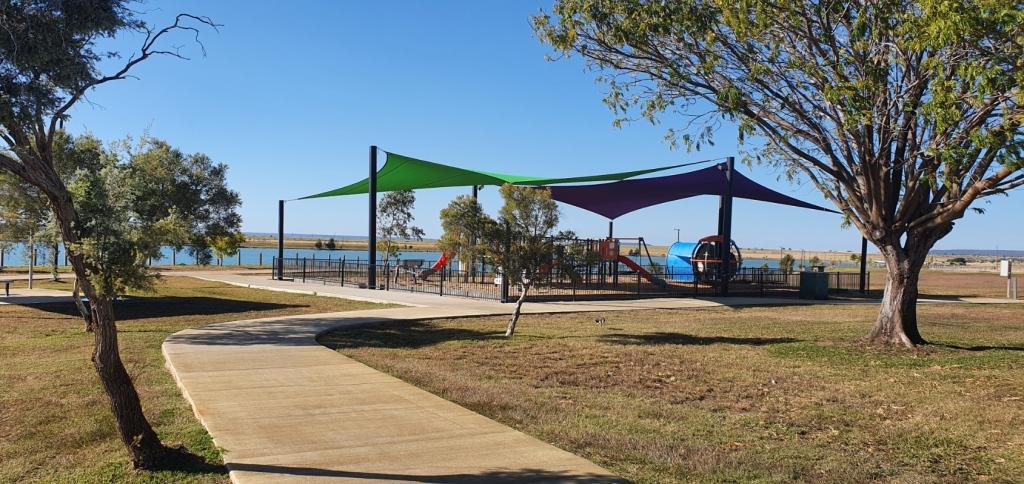 |
||||||||||||||
|
Dining - compliments of Hughenden Lions.
|
||||||||||||||
|
We had a wonderful surprise while at dinner that night, Charlie Wootten, the President of the Hughenden RSL Sub-Branch, presented us with a cheque for $500 for us to pass onto Legacy. When you realise his Sub-Branch has only a handful of members, this donation is magnanimous. We thank them very much.
This world certainly does have some wonderful people. |
||||||||||||||
|
Trev Benneworth with Charlie Wootten.
We decided, as we were here, we should have a look at the Porcupine Gorge – a 60km each way ride out of Hughenden. As had been our custom each morning, we refuelled all the bikes and support vehicles and set off. Up until now we had been lucky, there had been a few minor scrapes but so far the bikes had remained relatively unscathed – that was about to change.
About 50km from Hughenden, when in the National Park, Floyd Wilson met a kangaroo head on. One minute the road ahead was clear, the next instant he had a kangaroo in his lap. Luckily, Floyd is an experienced rider and he managed to keep the bike upright, he was a bit shaken but thankfully unharmed.
We don’t know who got the biggest shock, Floyd or the kangaroo, one minute the roo was happily crossing the road, the next instant it was in Floyd’s lap doing 80kph heading north. Floyd managed to pull the bike up, the roo untangled itself and was last seen heading for the hills at a rapid rate of knots
The bike suffered the most, the head-light was smashed, a few other bits were broken, but with some delicate work with duck tape it was back in business.
Another incident, this one not so serious, occurred when a bunch of cattle decided the grass was greener on the other side of the road and took off in pursuit in front of a few of the riders. Luckily it was relatively open ground and the cattle could be seen and there was plenty of time to stop. When the coast was clear we took off again and arrived at the unbelievable Porcupine Gorge.
|
||||||||||||||
|
Over hundreds of millions of years, the Porcupine Creek has carved into the landscape and formed this huge gorge.
|
||||||||||||||
|
Jim Zekants and Cathy Yang.
|
||||||||||||||
|
||||||||||||||
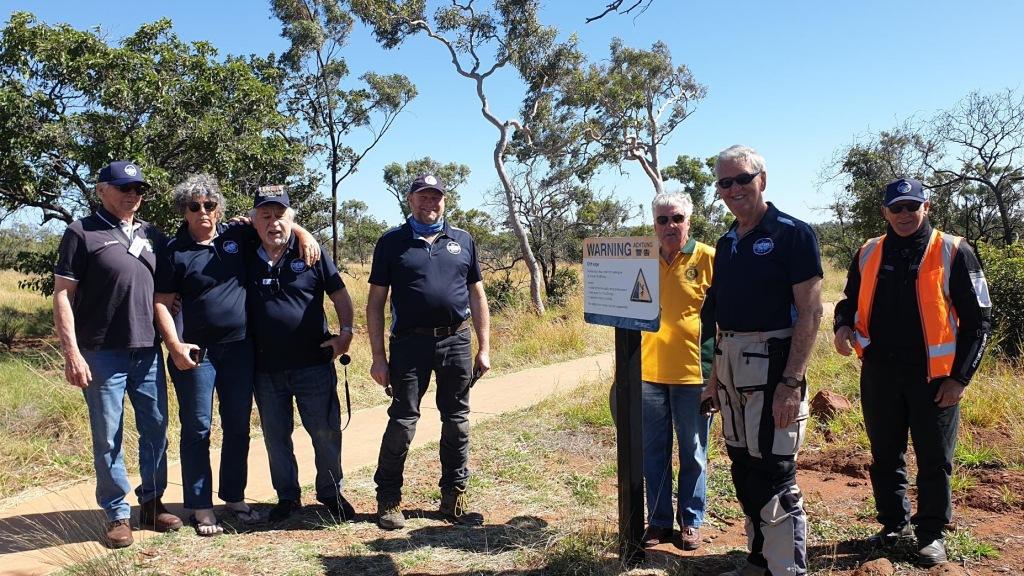 |
||||||||||||||
|
L-R: Jim Zekants, Jillian O’Toole, Ted McEvoy, Chris Dietzel, John McDougall, Floyd Wilson, Wal Shakoff.
After a good look around, we headed back to Hughenden, refuelled again then headed for Charters Towers, our next overnight – 243ks away. This was to be a 370km day, a big one.
40km down the road we stopped at the little Prairie State School to spend some time with the kids. As we’d been out to Porcupine Gorge, we were running much later than originally planned. Principal Maggie Glynn had the kids ready for us and once again, the kids were a delight, happy, well mannered, eager to chat with a bunch of old people and once again, keen to hop on the bikes and tuck into the “show bags” we had for them.
|
||||||||||||||
|
|
||||||||||||||
|
|
||||||||||||||
|
| ||||||||||||||
|
Prairie State School’s motto is: 'Truth Conquers All Things', and this belief is the foundation of all things at the school. Its old fashioned values of hard work, courtesy, good manners, honesty, helping the community and at all times trying your best are highly valued by all in the Prairie State School community – and it shows.
Prairie State School was opened the 14th April 1894 making it one of the oldest schools in Queensland. Today the township of Prairie has a population of approximately 50 people. In the 1870's, Prairie was a main horse change centre for Cobb & Co. Coaches which ran from Pentland and followed the Christison track to Hughenden. Prairie is part of the Great Northern Railway Line that links Townsville and Mount Isa. Several hundred men, many whom were Irish immigrants, worked on this line and some settled in the area. The Prairie of today is a much quieter place.
We think the kids enjoyed us calling in, we know we definitely did. We might see them again in 2023.
| ||||||||||||||
|
Our next stop was a lunch break at the Exchange Hotel at Torrens Creek, a further 45km from the Prairie State School. We had forewarned the proprietor of our arrival and pre-ordered lunch and although there was only he and his lady running the hotel, lunch was perfect.
| ||||||||||||||
|
After lunching and having a break, we loaded up again and headed for Charters Towers, a further 158km, where we were to spend 2 nights.
| ||||||||||||||
|
The unofficial Mayor of Charters Towers, Ken Hey, had organised for us to stay at the PCYC and Sgt Paul Ansell, the club manager gave us an excellent rental, for which we are very thankful. The club was perfect, plenty of room, a fully equipped kitchen, toilets and showers, plenty of parking and was close to everything in the city.
Thanks again Paul – hope to see you again in 2023.
| ||||||||||||||
|
We were fortunate to have Charters Towers Mayor, Frank Beverage, an experienced biker himself, hop on one of our little bikes and give us a tour of his wonderful town..
Charters Towers, a town they call ‘The World' was born to the sound of thunder and flashes of lightning. In 1871, Hugh Mosman, George Clarke, John Fraser and horseboy Jupiter had been prospecting away to the south of what is now Charters Towers when their horses scattered during a fierce thunderstorm. It was while searching for the horses next morning that gold was discovered.
The party returned to Ravenswood to register their find which they named Charters Towers after the Gold Commissioner W Charters and Towers because of the conical shaped hills in the vicinity of the discovery.
A rush of ‘fortune seeking men' quickly followed and a small settlement named Millchester formed on the water at Gladstone Creek. By the end of 1872 some 3000 people inhabited the new field. The alluvial men left early on for the Palmer River discoveries but the hard rock miners remained, seeking the gold in the deep veins underground. Charters Towers rather than Millchester soon became the main settlement. The goldfield did not reach its peak of gold production until 1899.
During the period 1872-1899 the place changed from a rough settlement with bark and calico buildings to a thriving City of some 25,000 inhabitants.
| ||||||||||||||
|
The City, by that time, had properly formed streets, some wonderful houses and many grand public buildings lining the two main streets. A plentiful supply of water for domestic and other purposes was pumped to the town from a Weir in the Burdekin River about 9 miles to the north. Underground electricity was also supplied to parts of the main town area. Literally 100s of shafts were sunk during the lifetime of the field and the ore raised was processed through many large Treatment Batteries. It is estimated that 6,000,000 ounces of gold was won in the first 40 to 50 years of the life of the Towers.
All religions were strongly represented on the field and in 1890 the miners could quench their thirst in no less than 65 hotels registered on the field. Sports, music and the arts all had fantastic followings. It was said that everything you might desire could be had in the Towers. There was no reason to travel elsewhere for anything. This is why the town became known affectionately as ‘The World'.
The decline of mining following World War I saw the population shrink and the town become the supply centre or hub of the Dalrymple Shire as well as the educational centre for students from all over North Queensland.
|
||||||||||||||
|
Charters Towers was once a financial hub and the second largest city in Queensland. The Stock Exchange began trading in this arcade in 1890 and continued operations there until 1916. It enabled the buying and selling of shares in mining companies, investment or speculative. The evening call was open to the public and hundreds would crowd in the Arcade to be part of the occasion.
Built in 1888, the Royal Arcade housed a number of shops and offices but when the Stock Exchange closed due to the rapidly diminishing returns from the gold mines and decreased population, the Arcade fell into disrepair but was saved from demolition in the 1970s by the Charters Towers and Dalrymple Historical Society. It was later transferred to the National Trust.
|
||||||||||||||
|
When gold bearing ore was mined, it had to be crushed to extract the gold. The Venus Stamp Battery, which was built in 1872, was the second permanent mill built in the area and is now the oldest surviving battery in Queensland.
|
||||||||||||||
|
As it has been a popular tourist attraction since 2002 – we had to do the tour.
|
||||||||||||||
|
By 1889, Charters Towers was producing 1/6th of all of Australia's gold and Queensland became the most productive gold producing colony in Australia. It was hard, noisy, dirty and very dangerous work - what do they say about the good old days?
And what is it about “No entry” signs that attracts Marie Henson.
|
||||||||||||||
|
Mayor Frank Beverage gave us a tour of the town’s old City Hall building which was built at the peak of the Charters Towers gold rush in 1891, originally for the Queensland National Bank. When the bank was closed in the early 1940s, it became a workers' club established by the Trades and Labour Council. This was not a success and in 1948, the property was acquired by the Charters Towers City Council and used as the City Hall. Situated at the corner of Gill and Mosman streets, it occupies a most central position and is one of the architectural ornaments of the town.
|
||||||||||||||
|
|
||||||||||||||
|
Can an atheist get insurance against acts of god?
|
||||||||||||||
|
Charters Towers played an important role during WW2 and Mayor Frank Beverage took us on a tour to show us what remains of those troubled times.
In late 1942 Townsville was the principal port for Allied troops serving in the New Guinea campaign. The RAAF had a base at Garbutt and a number of bases used by Australian and US aircraft were established between Townsville and Charters Towers. Between 1942 and 1945 the Townsville and Charters Towers region became one of the largest concentrations of airfields, stores, ammunition depots and port operations in the South West Pacific Theatre.
Charters Towers was the closest inland centre that could provide strategic support and aircraft dispersal facilities for Garbutt, which was considered vulnerable to Japanese attack. The RAAF ordered commencement of preliminary work on the Charters Towers town airport early in 1942, with the grading of three temporary landing strips for use while the main aerodrome was under construction.
The airfield became operational during March 1942 with arrival of the first of four bombardment squadrons of the US Army Air Force 3rd Bombardment Group (Light), equipped with A-24 Dauntless dive bombers which had been intended for the Philippines. The group, which became part of the 5th Airforce, was later equipped with A-20 Havoc (or Boston) medium bombers. These aircraft were followed by the arrival of B-25 Mitchell bombers that had been intended for use by the Dutch in the Netherlands East Indies, but were taken over by the Americans.
|
||||||||||||||
|
Mayor Frank Beverage explaining the aircraft gun firing range. You can see the target in the distance.
|
||||||||||||||
|
During
mid-February 1943 the Department of Public Works received a requisition from the
US Army for construction of a gun firing range, or bore sight range, platform at
Charters Towers airfield to test the accuracy of aircraft fixed armament. The
concrete gun firing platform was designed with an adjustable metal plate set in
front of the concrete block to take the nose wheel of aircraft with tricycle
undercarriages. A steel gantry frame with a sling was positioned on the platform
to lift the tail of fighter aircraft with tail wheels such as the P-40 Kittyhawk.
The bore sight range extended about 360 metres to an earth mound, or butt, in
front of which a target was set. The bore sight range is the only known example
of its type in Queensland with an adjustable
nose wheel
platform.
|
||||||||||||||
|
Towers Hill also played an important role during WW2. A total of 29 concrete bunkers were built on the hill to store bombs, ammunition, explosives and detonators, now the Hill is an important tourist attraction for visitors to the City.
|
||||||||||||||
|
Standing L-R: Ken Hey, Wal Shakoff, Neil Snudden, Andy McCann, Jock Young, Chuck Connors, Marie Henson. Seated L-R: Alan O’Connor, Geoff Spackman, Trev Benneworth, Thanya Pattay, Sandie Downes.
|
||||||||||||||
|
|
||||||||||||||
|
And being the highest point for miles around, why not stick a few aerials on it.
|
||||||||||||||
|
Then before we knew it, our two day stay at Charters Towers had come to an end but before we were to leave, the magnificent Civic Club invited us to spend an evening with them and Charters Lions Club offered to provide dinner in the form of an Ozzie barby. Thanks to them both, an enjoyable evening.
|
||||||||||||||
|
The Civic Club is a heritage-listed club house at 36 Ryan Street, Charters Towers. It was built in 1900 and was added to the Queensland Heritage Register on 21 October 1992.
In the year when the mushrooming goldfield became officially a town, a group of mining men began meeting informally at a hotel. Later, they were to call themselves the Londoners' Association. In 1885 the association purchased land on which to build their own clubhouse and the premises were opened in May 1900 and provided a bar plus comfortable and well-lit rooms.
Initially membership of the club was exclusively male and comprised many of the city's most influential men. In 1907, it was renamed the Civic Club.
|
||||||||||||||
|
L-R: Neil Snudden, Ros Curran, Trev Benneworth.
Neil was the bike master for the event and from day 1 kept a close eye on riding habits and the serviceability of the bikes. Ros was the unflappable WOD and had a knack of fixing problems before they occurred. Two indispensable people who made the event so enjoyable, so safe and kept the whole thing running like clock-work.
Initially membership of the club was exclusively male and comprised many of the city's most influential men. In 1907, it was renamed the Civic Club. |
||||||||||||||
|
|
||||||||||||||
|
At the Civic Club we were joined by Robbie Katter, the Qld MP for Traeger and Eileen Vogele, the local Legacy representative.
The Club remained a male preserve until 1980 when women were admitted during a period of rejuvenation when its membership base was broadened. The Club is now one of the few surviving examples of its type in a country town.
|
||||||||||||||
|
A British man was killed by a shark while honeymooning in Australia. Reports say he didn’t suffer for too long as he’d only been married for 5 days.
|
||||||||||||||
|
That evening it was time to honour some of our close friends for their meritorious service
|
||||||||||||||
|
L-R: Ted McEvoy for his melodious evenings, John “Johnno” Saunders for worrying a ton of money from the unsuspecting public, Cathy Yang for keeping us marching and Marie Henson for being the keeper of keys and showing us you can sleep with your Honda.
Next morning it was time to head for Townsville, our final destination, an easy 148km away. We decided to stop at Reid River rest area for lunch - 81kms away
|
||||||||||||||
|
Once again, Jock Young was in his element, Jock had become quite skilled at onion flipping and it was woe-betide anyone who dared to try and take the spatula from him. “Get out” he would roar and as soon as we would stop, he’d dart for the bag of onions, and humming quietly to himself, it would be skin, slice, oil, onto the barby, flip, flip, flip and very soon the onions would be ready and smelling lovely and Jock would sit back with a satisfied grin on his face.
Sadly for him though, this was his last hurrah, on the road cooking was finished, the show was all but. What to do? We ate our onions in silence, feeling Jock’s pain, then Geoff had a brilliant idea, as a show of our gratitude we all tossed in and shouted him a cold can of "no-sugar” coke. Hurrah!!
|
||||||||||||||
|
A British man was killed by a shark while honeymooning in Australia. Reports say he didn’t suffer for too long as he’d only been married for 5 days.
|
||||||||||||||
|
It was Friday and after lunching, we cleaned and loaded up the barby for the last time, then headed for the run down to Townville. Army had offered to accommodate us for the weekend at Lavarack Barracks, which was super generous of them, and we looked forward to a bed that didn’t need blowing up, to a shower that wasn’t a hundred yards away and the possibility of having access to washing machines that didn’t gobble up 2 dollar coins like a Beagle into Pal.
|
||||||||||||||
|
Arriving Lavarack Barracks.
Army had offered us one of their transit blocks on the Base, an offer which we gratefully accepted. After a brief stop at the Pass Office we worked out a simple system for arriving and departing the base, we had previously given them a list of all our names and vehicle types with registrations then all the gate guard required was a brief showing of an ID that matched their list and we were granted access. Simple.
|
||||||||||||||
|
Transit block.
|
||||||||||||||
|
The welcome beds that awaited us.
|
||||||||||||||
|
We paid our respects to LtCol Chris Johnson, the CO of 3rd Battalion at Lavarack and as it happened the Officer's Mess was hosting an interesting evening. Chris kindly invited us.
|
||||||||||||||
|
Although there wasn’t a “No Entry” sign in sight, Marie found the Kombi Keg very early in the day.
|
||||||||||||||
|
And with a few days to spare, most went sight-seeing. One of the best ways to see Townsville is from Castle Hill. Definitely worth a trip.
|
||||||||||||||
|
|
||||||||||||||
|
Most people had made their own arrangements on how to get home from Townsville, some lived there so there wasn’t a problem, some were going by plane, some by train, some driving their own cars and a few had decided to head south in one of the buses. The bikes had to be returned to Nibble Hire in Brisbane and as there was no-one stepping forward to volunteer riding one, we had arranged to have them freighted back.
Once again we experienced the generosity of some wonderful people. We approached NQ Freighters for a quote and were pleasantly surprised when they offered to take the bikes back to Brisbane free of charge as their donation to Legacy. We must thank them very much.
|
||||||||||||||
|
NQ Freighter delivered the bikes to their depot on the south side of Brisbane. We thought we’d need a few “volunteers” to ride them back to Nibble Hire in Newstead but once again, generosity came to the fore. Asset Towing volunteered to bring them from Carole Park back to Brisbane. It took them 2 trips as they could only fit 5 bikes on the back of their truck but they did it, and we thank them very much.
And that was Scootaville 2022. We’re going to do it again in 2023 and every year after that. The route in 2023 will be different to 2022 (see HERE) and of course most of those that braved 2022 will want to be part of 2023.
It will still be a fund raiser for Legacy.
2023 will be a bit different though. We have confirmed our negotiations with USQ and they will send along several of their senior media students who will record the event from start to finish, bring all the data back to the Uni where it will be edited and made into a 60 minute program for showing on TV.
We’ve also been in touch with Merv Hughes and Merv has agreed to be the public “face” of the event and will try and join us somewhere along the route.
We do have a few spare spots and if you’d like to be on the 2023 tour, please fill in the form below and send to us. If you want to come as a rider you will need a motor bike licence. We will need to see a copy of your licence - later.
|
||||||||||||||
|
|
||||||||||||||
If you haven't yet seen the Channel 7 interview conducted on our arrival at Townsville - it's HERE
|
||||||||||||||
|
Imagine life without beer. Now slap yourself and never do it again.
|
||||||||||||||
|
You can download the full Scootaville story from HERE.
|
||||||||||||||
|
Back Go to page: 1 2 3 4 5 6 7 8 9 10 11 12 13 14 15 16 17 18 19 20 Forward |
||||||||||||||

